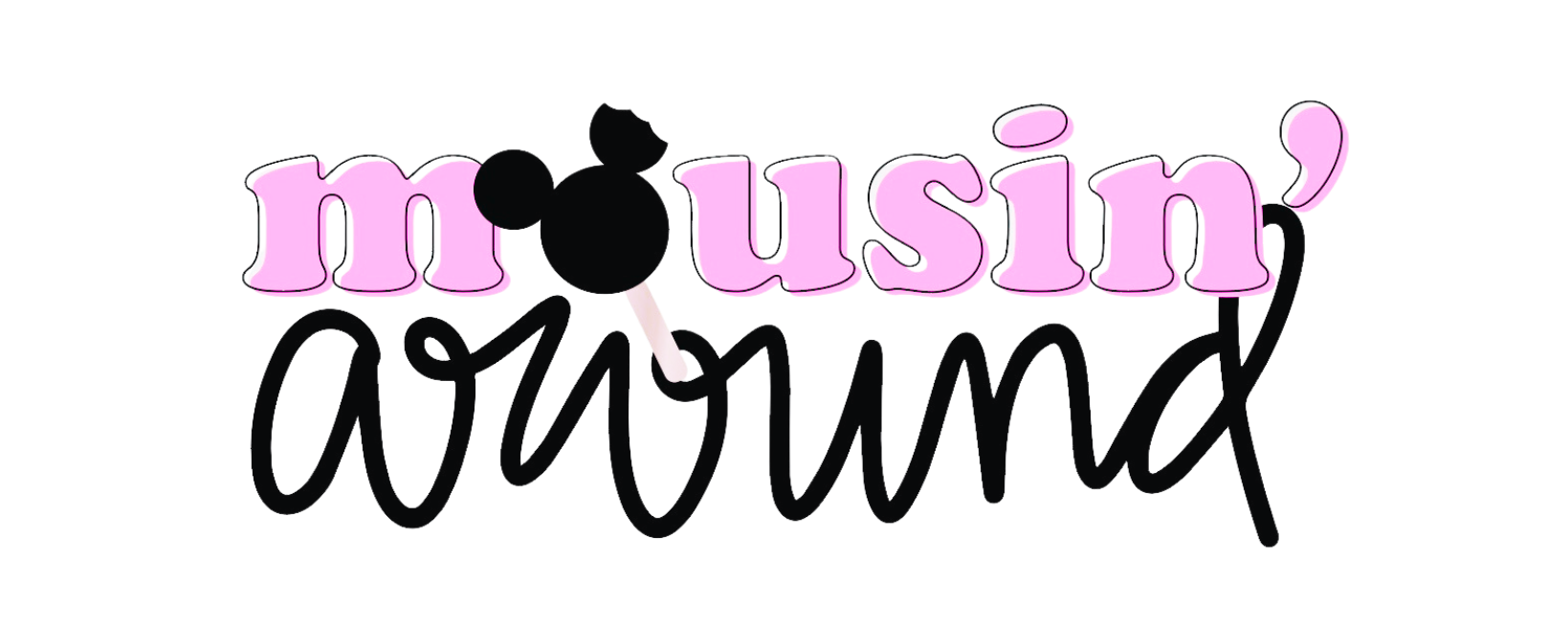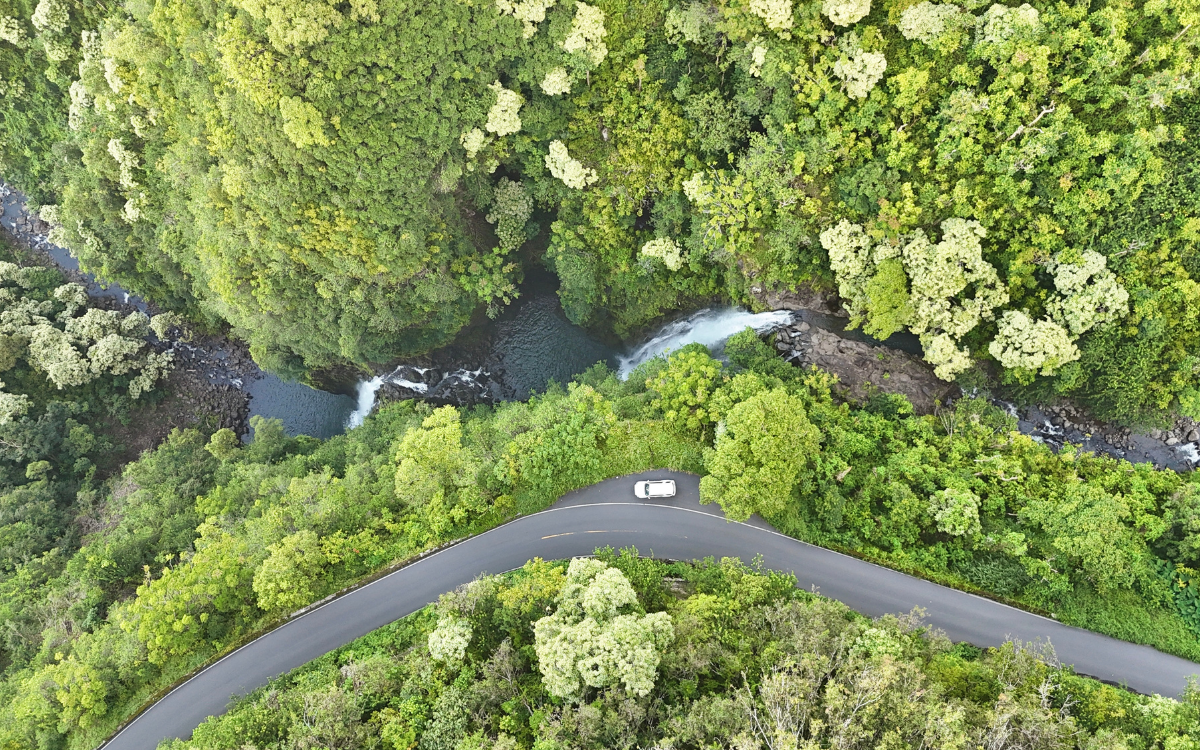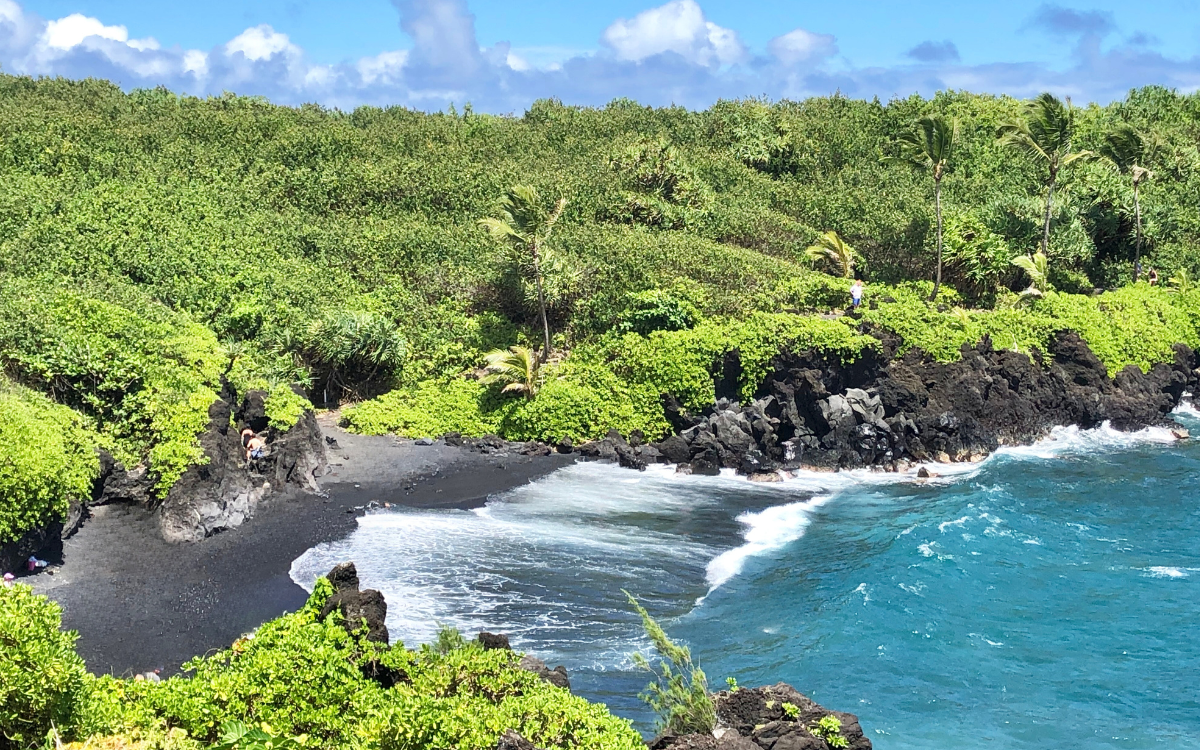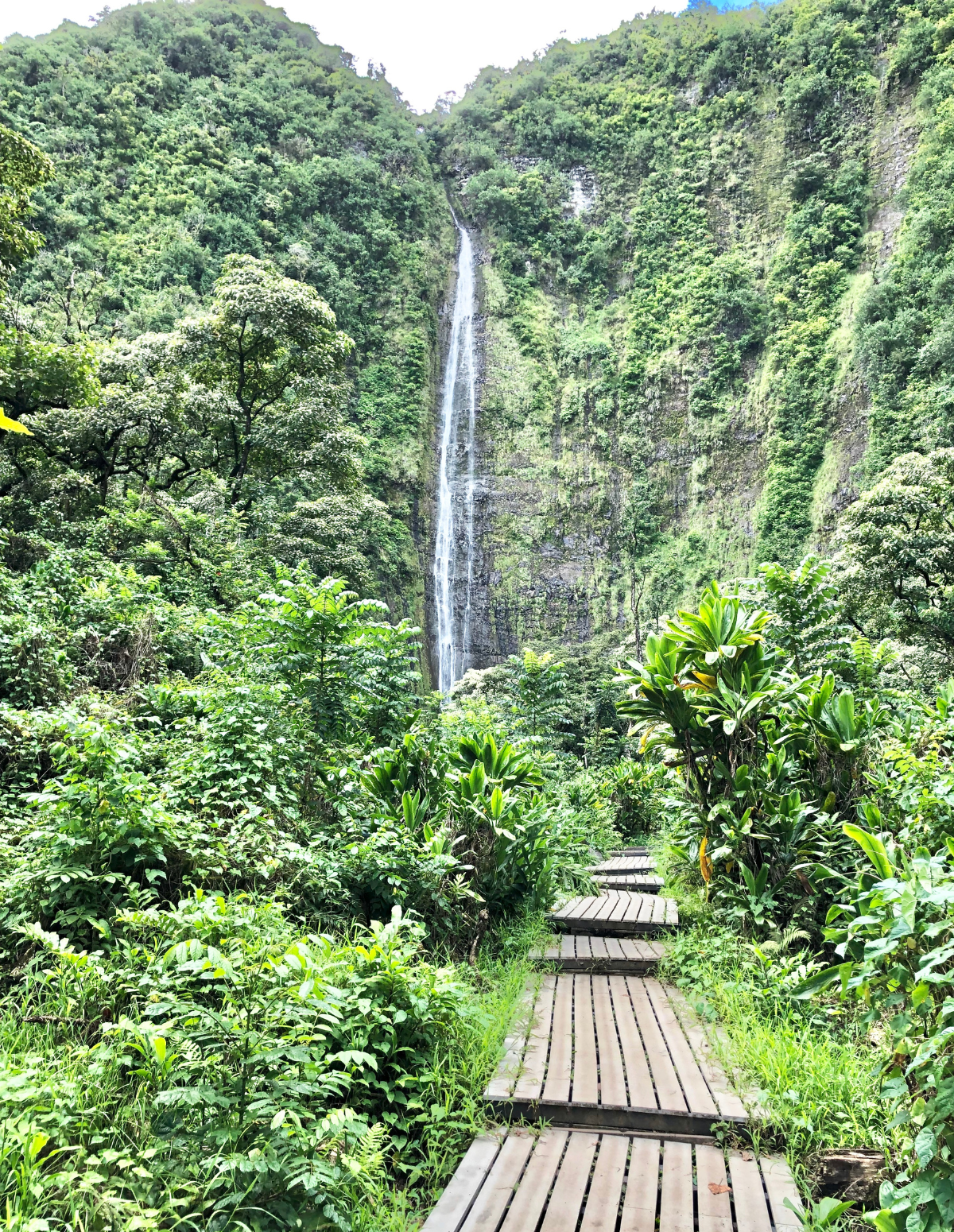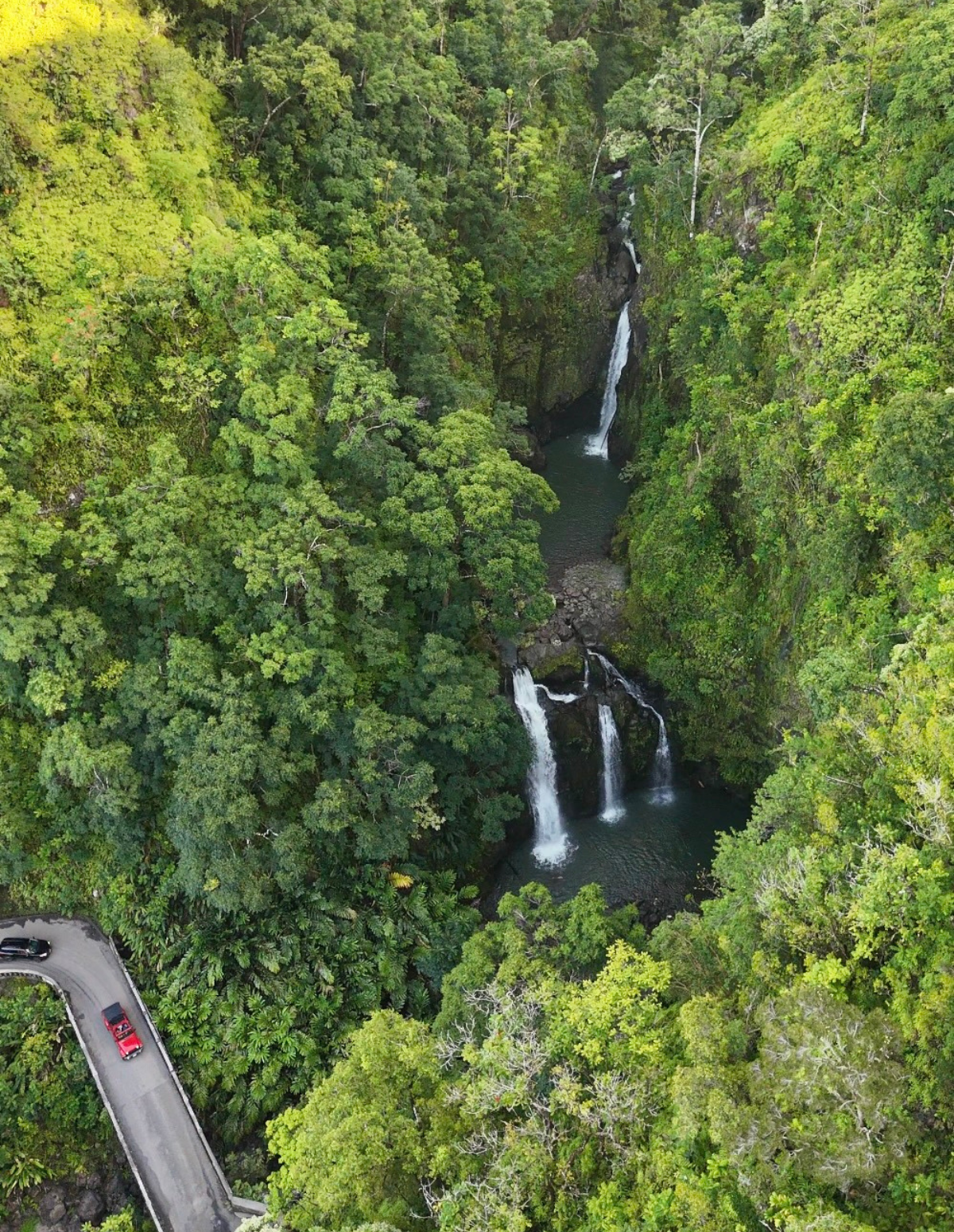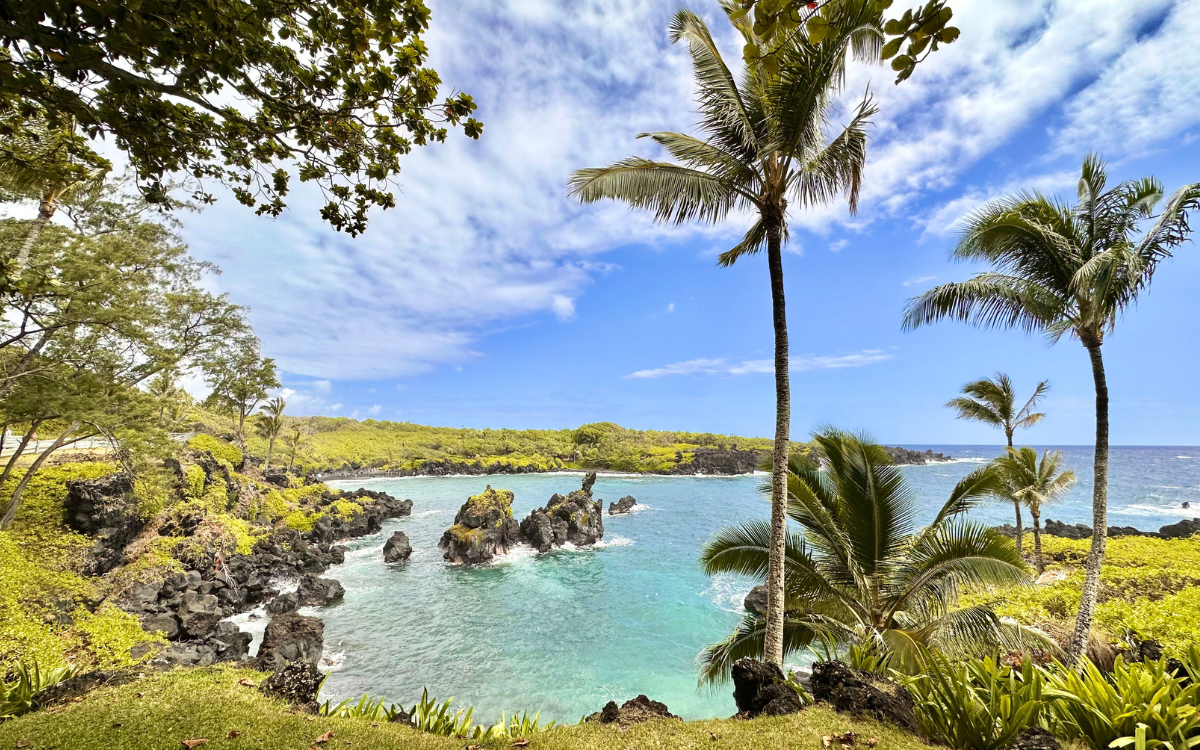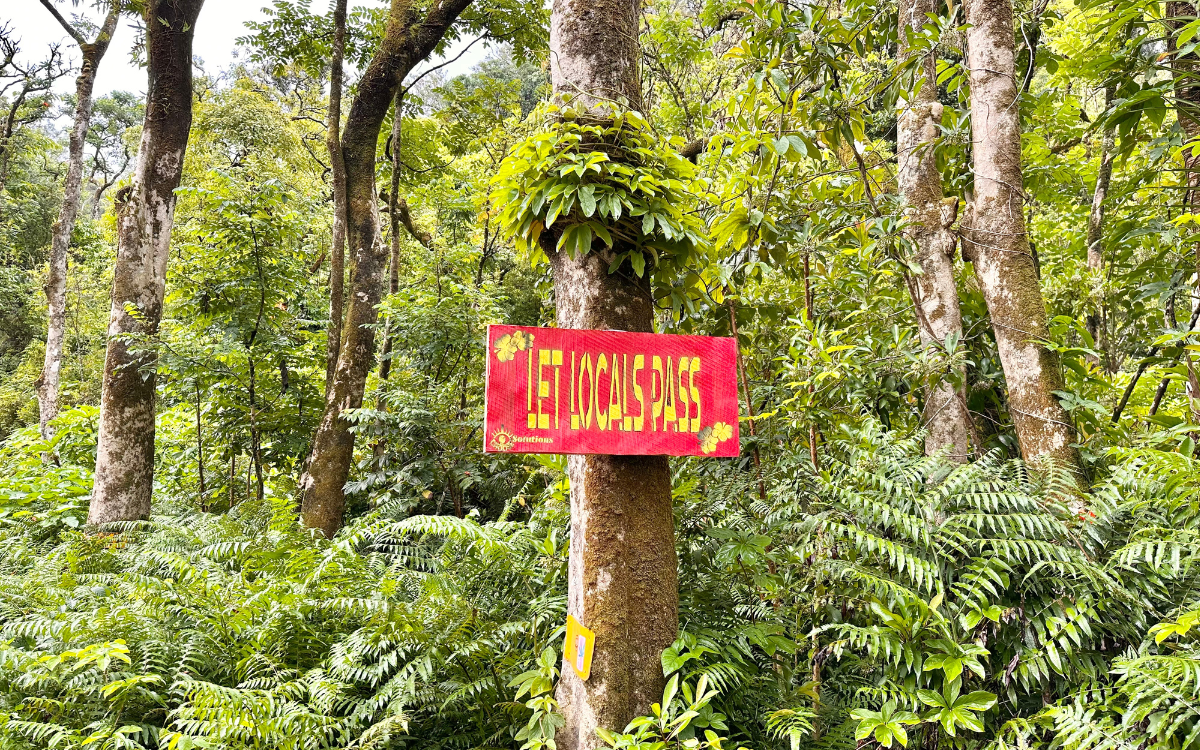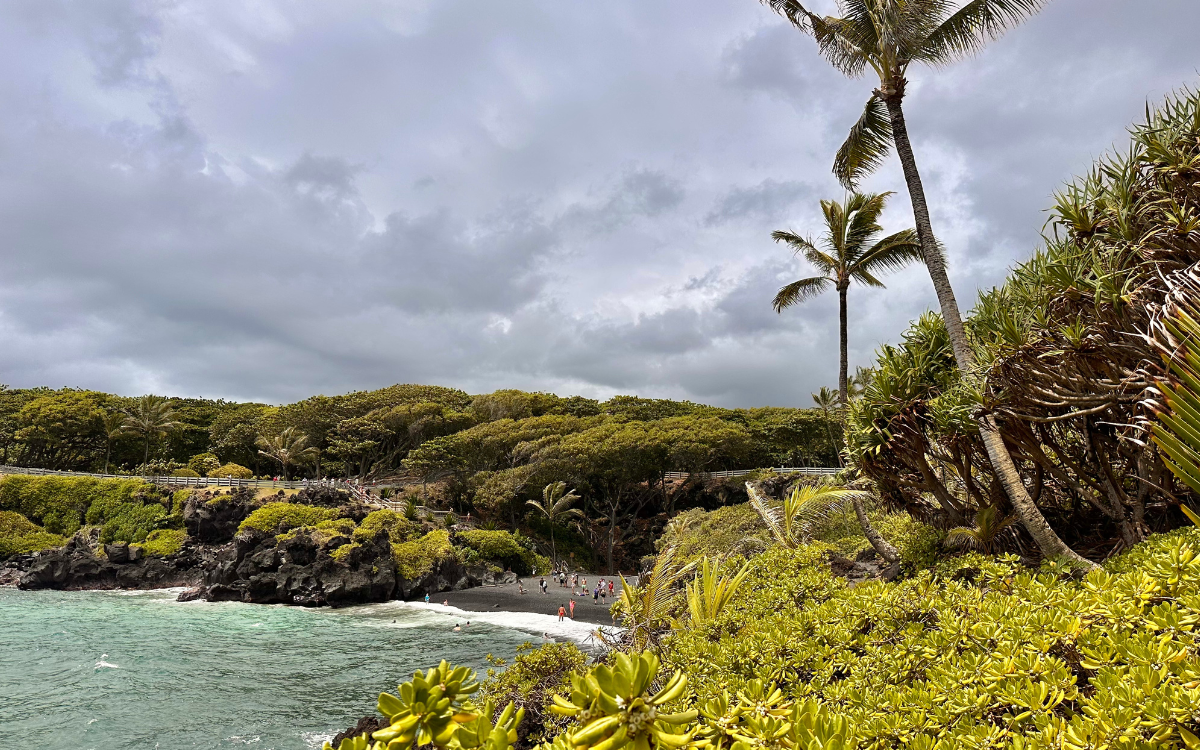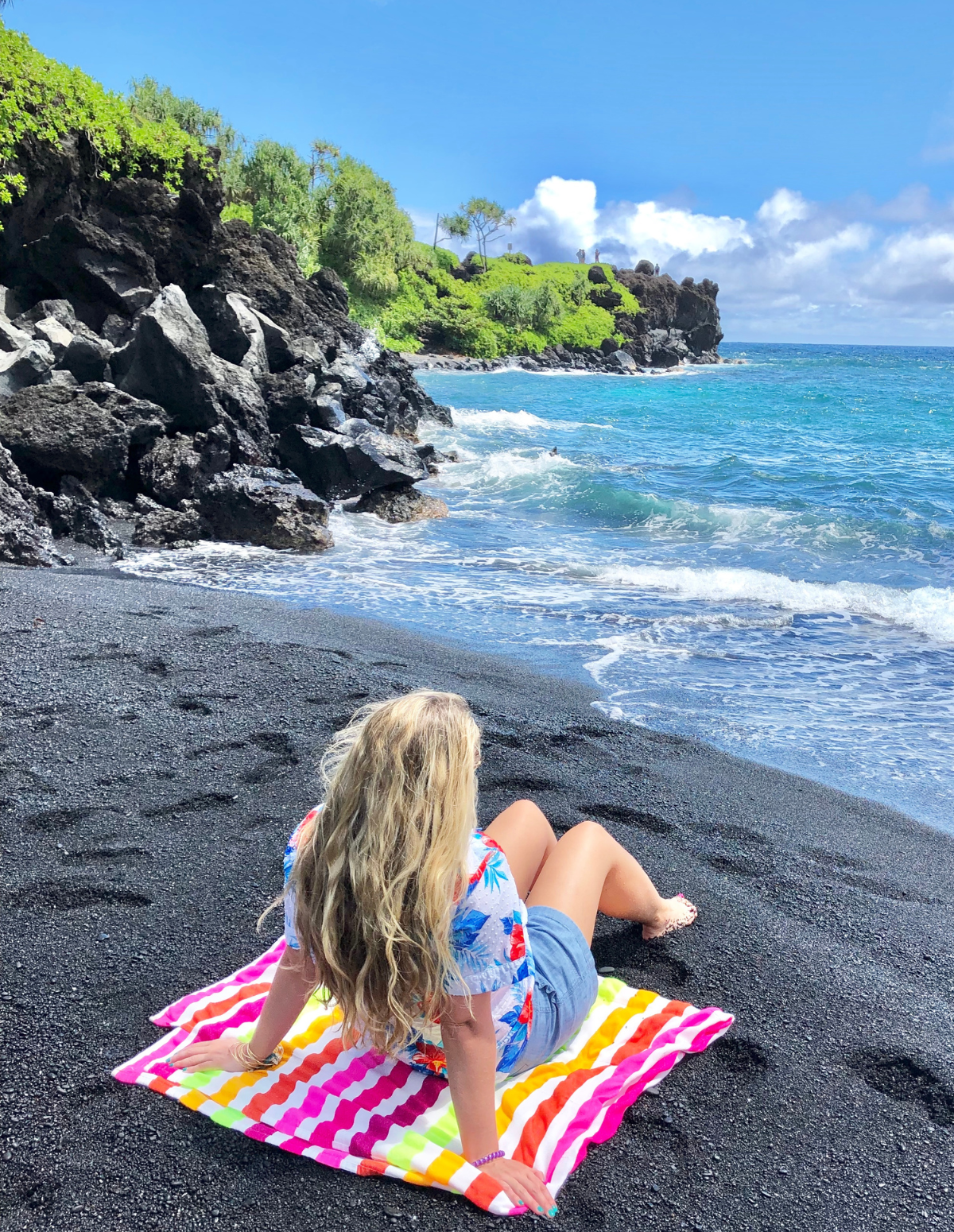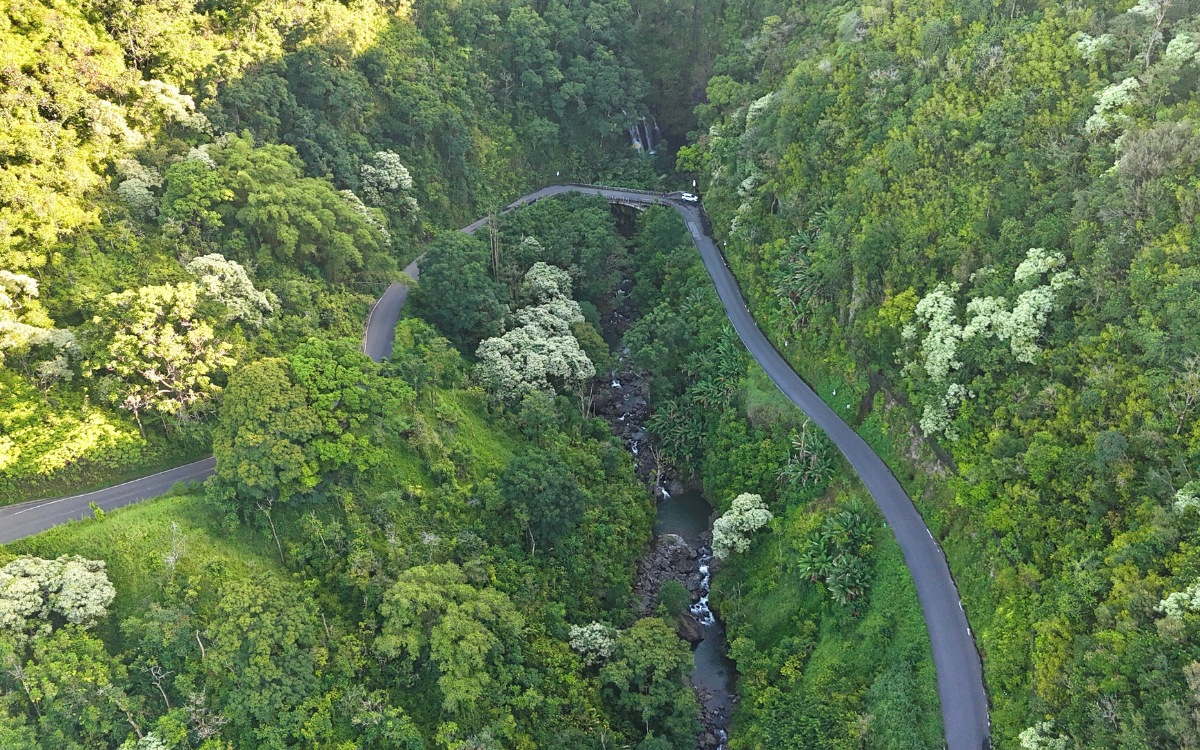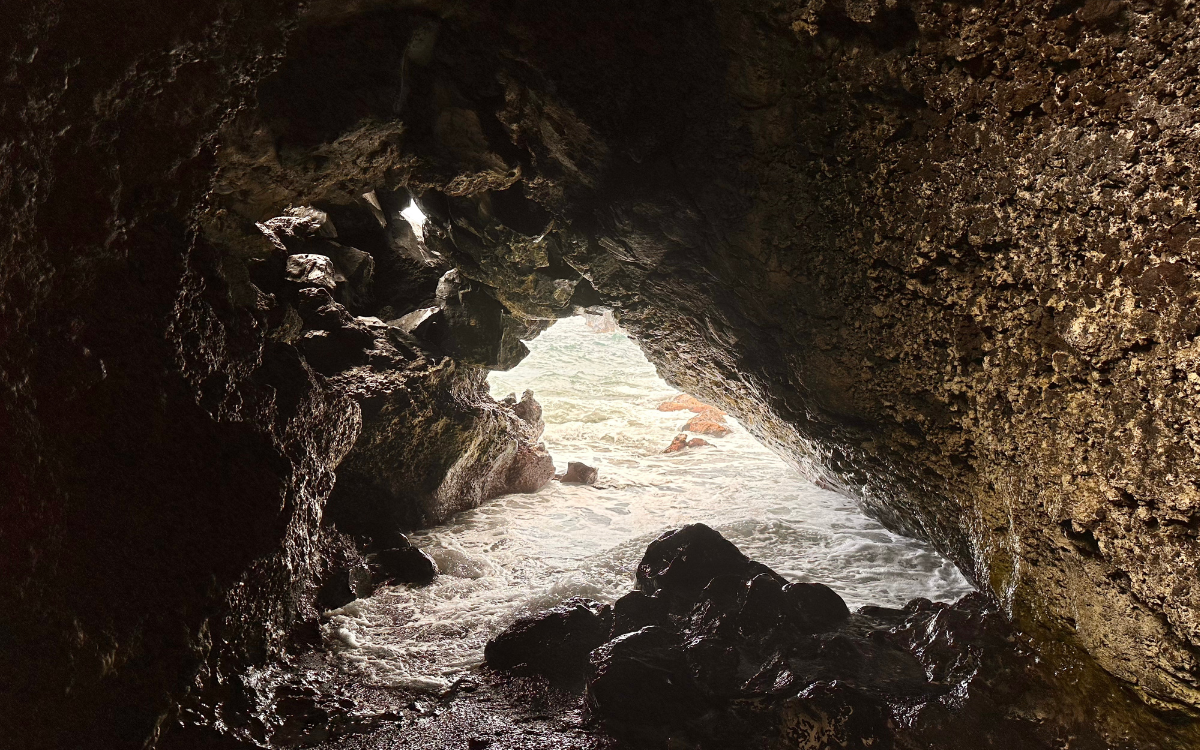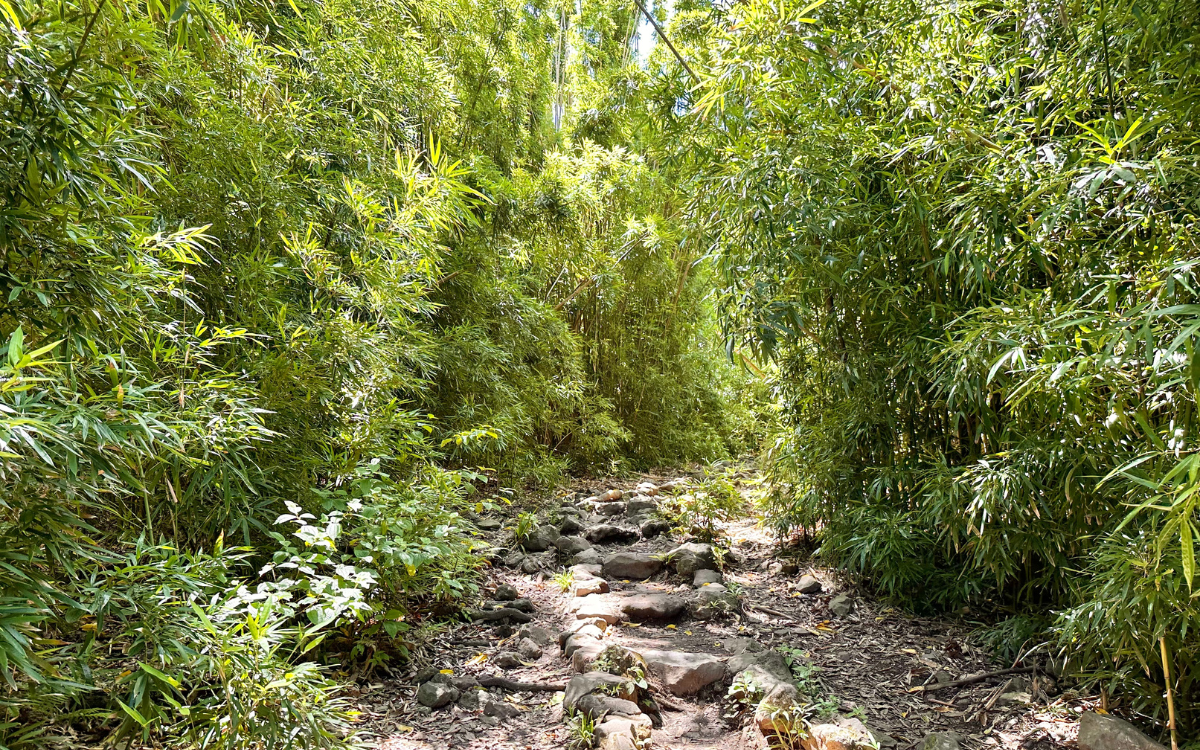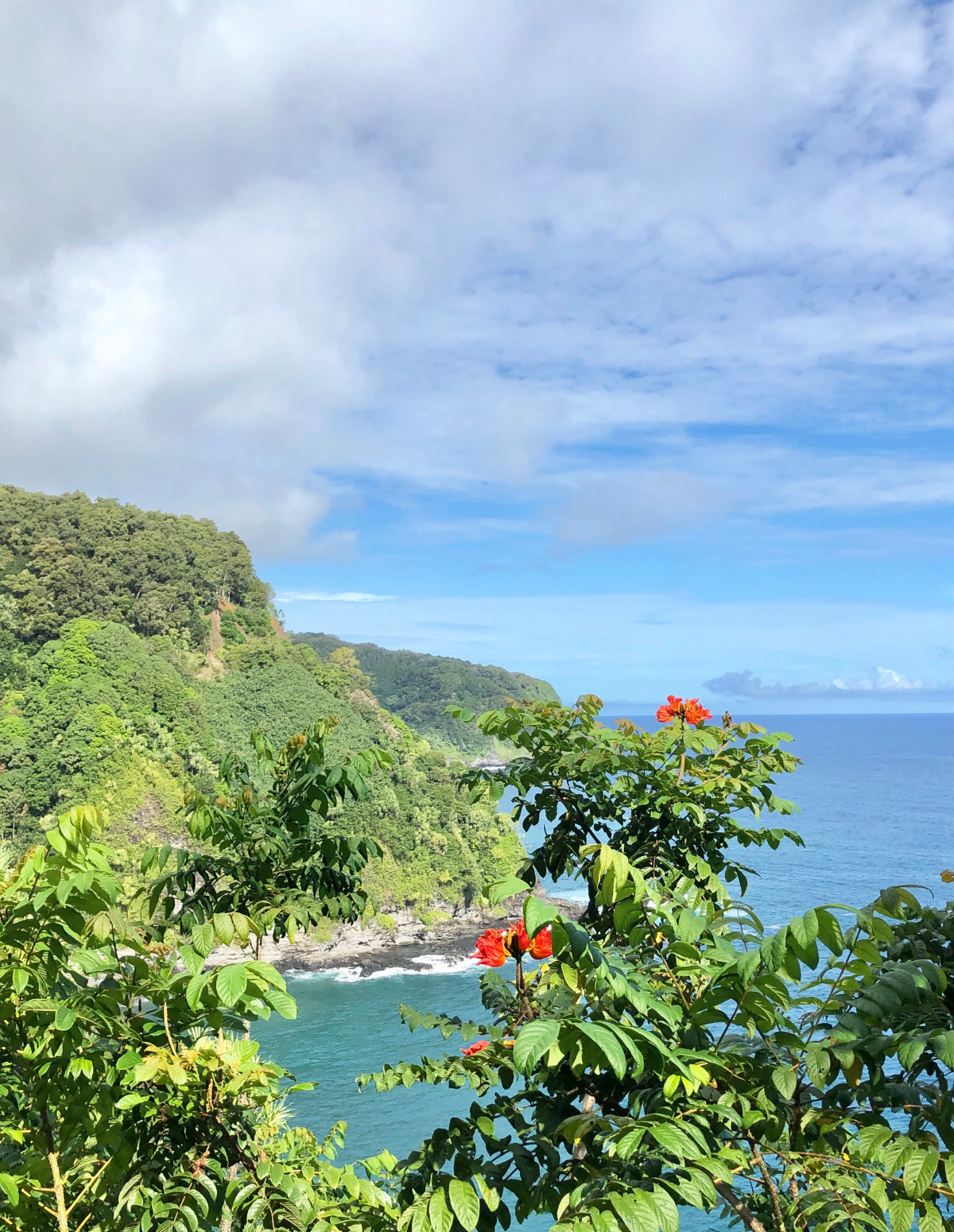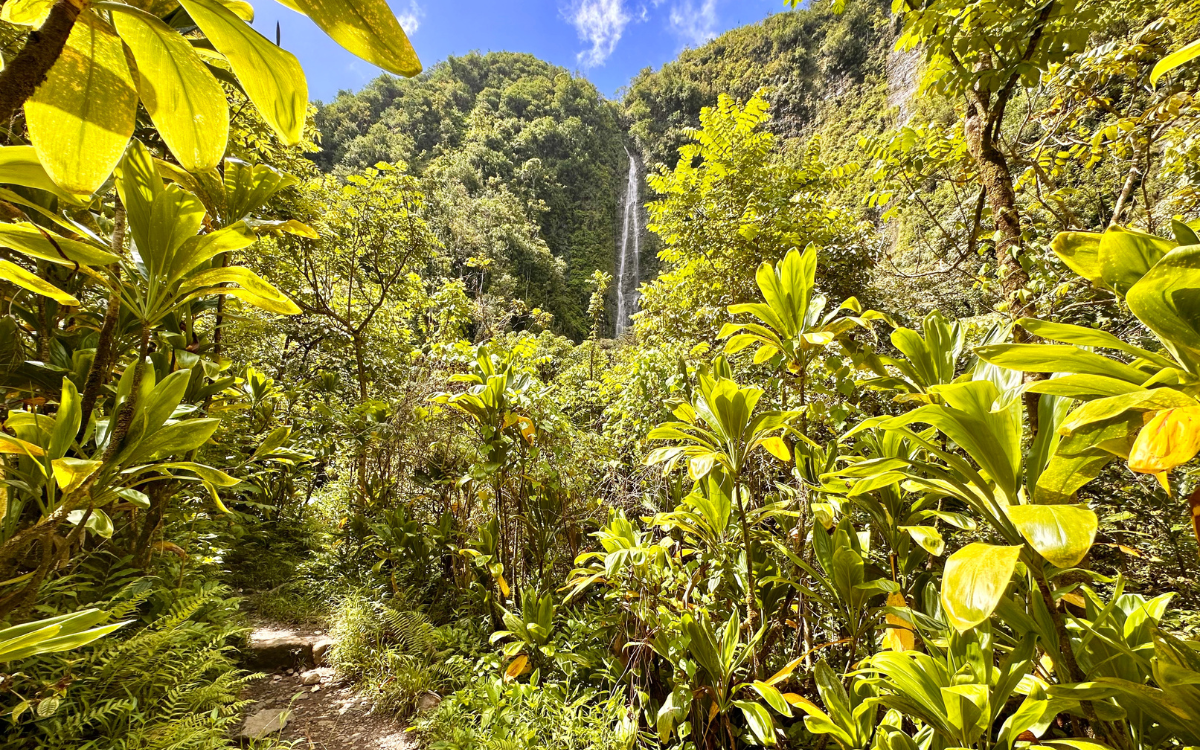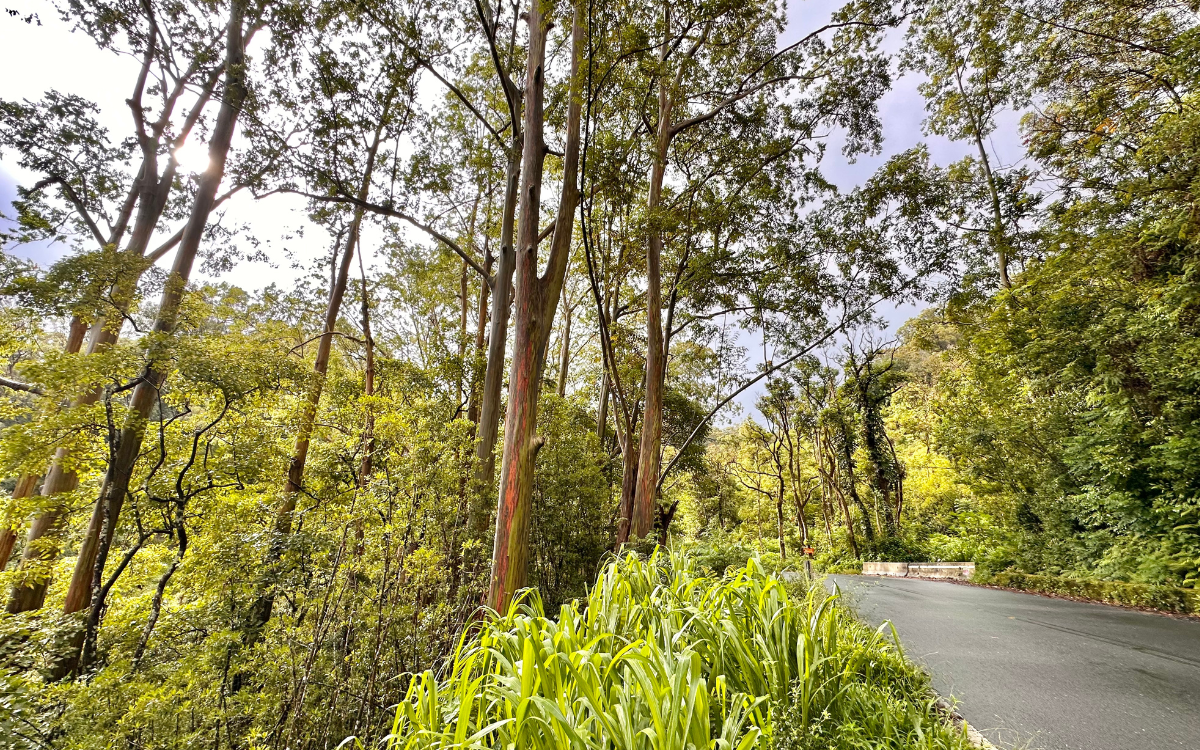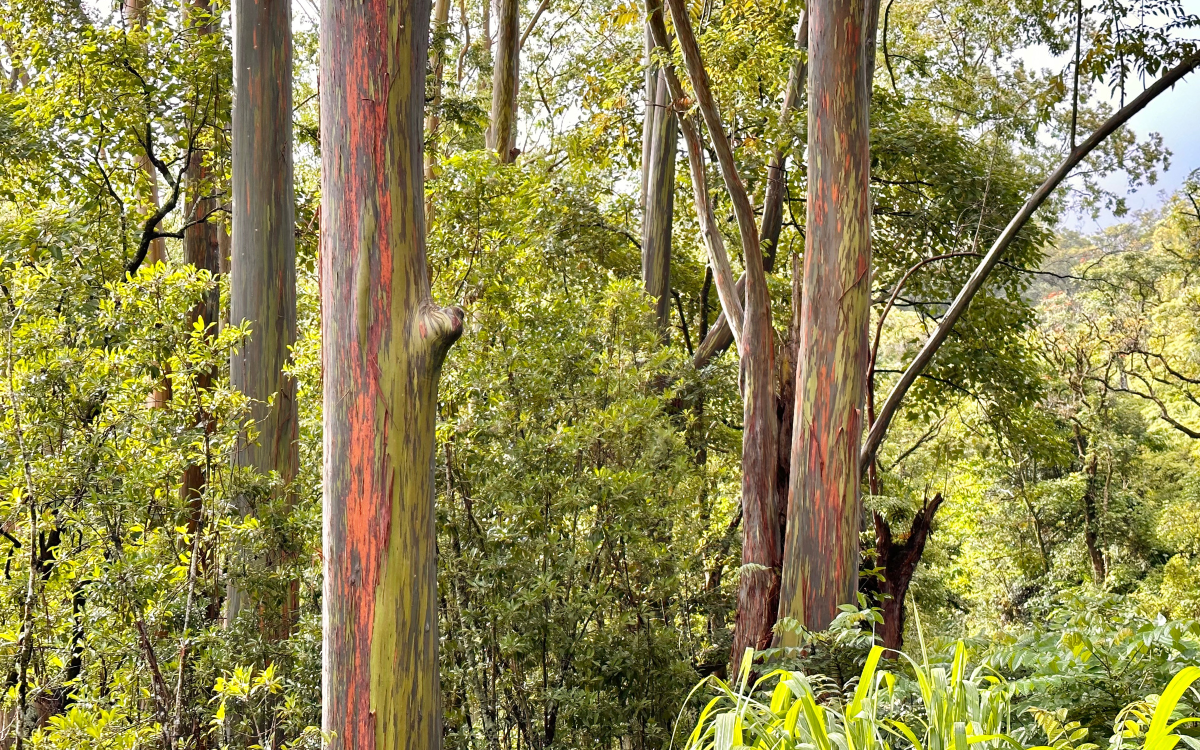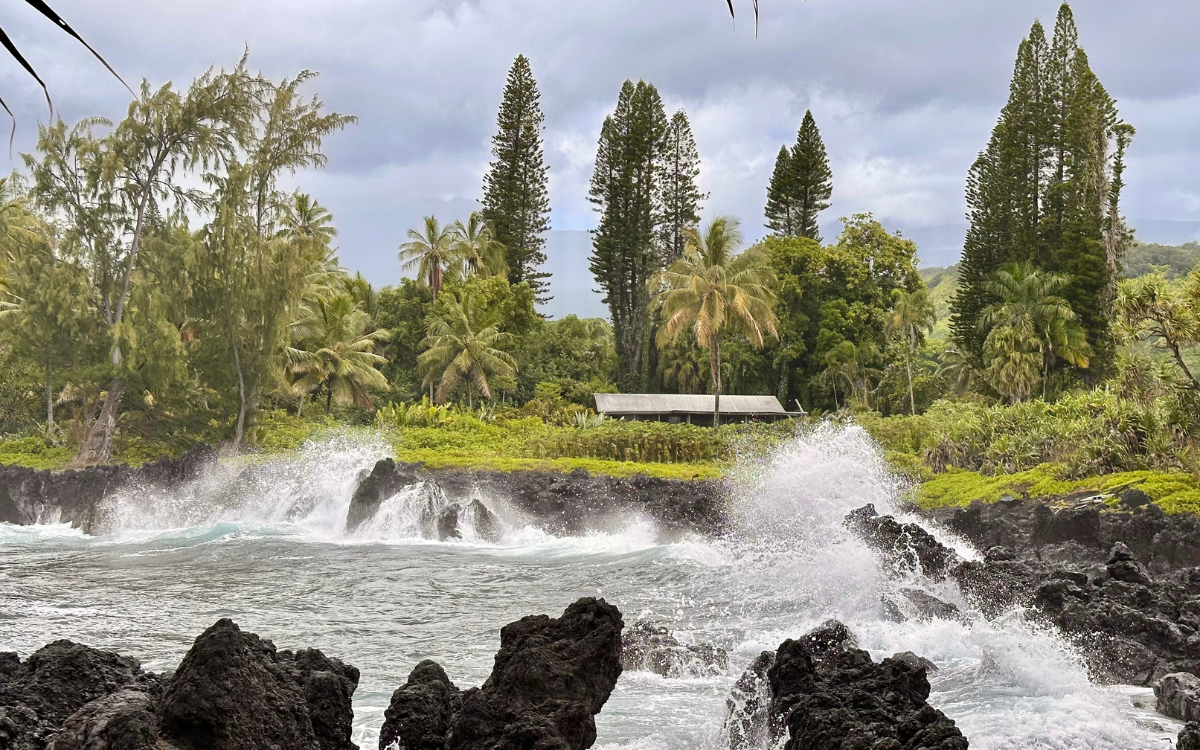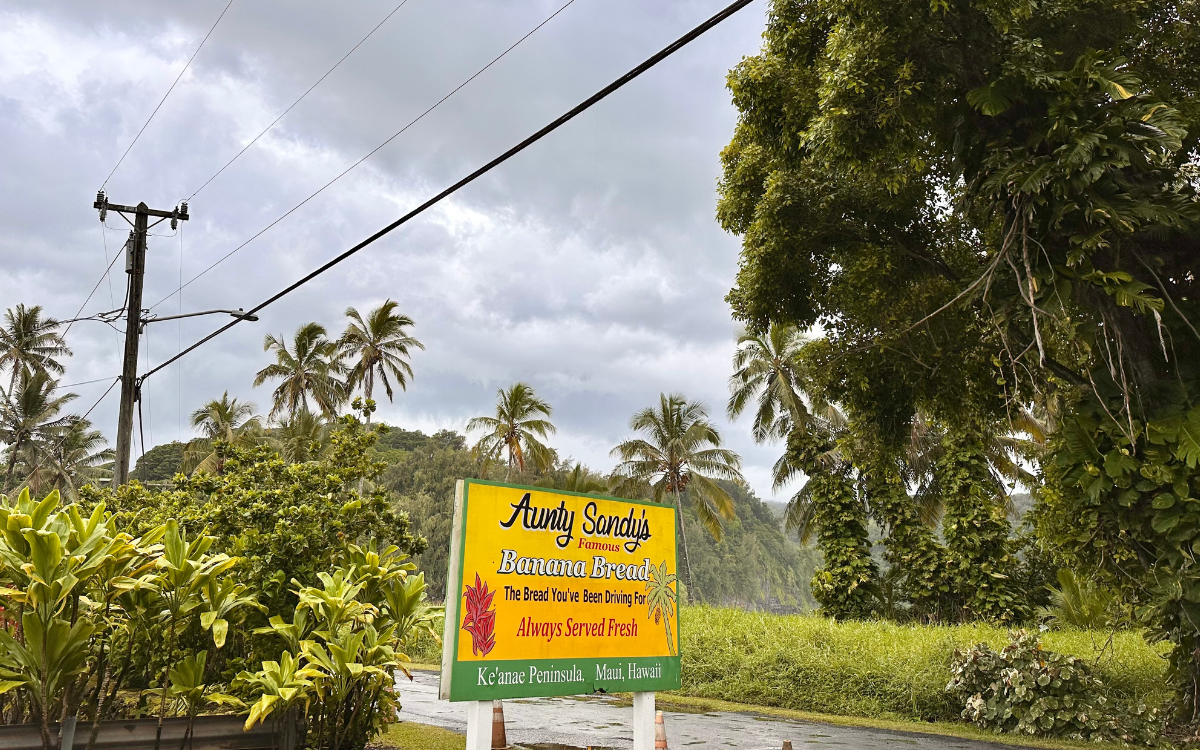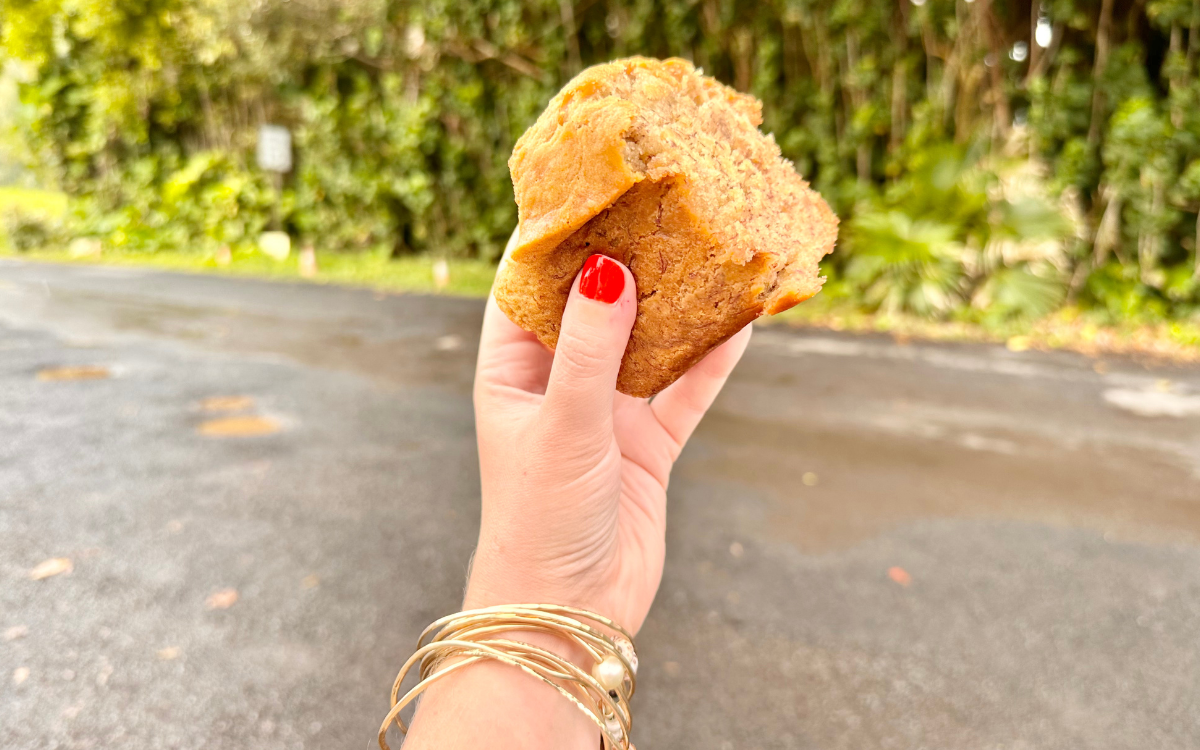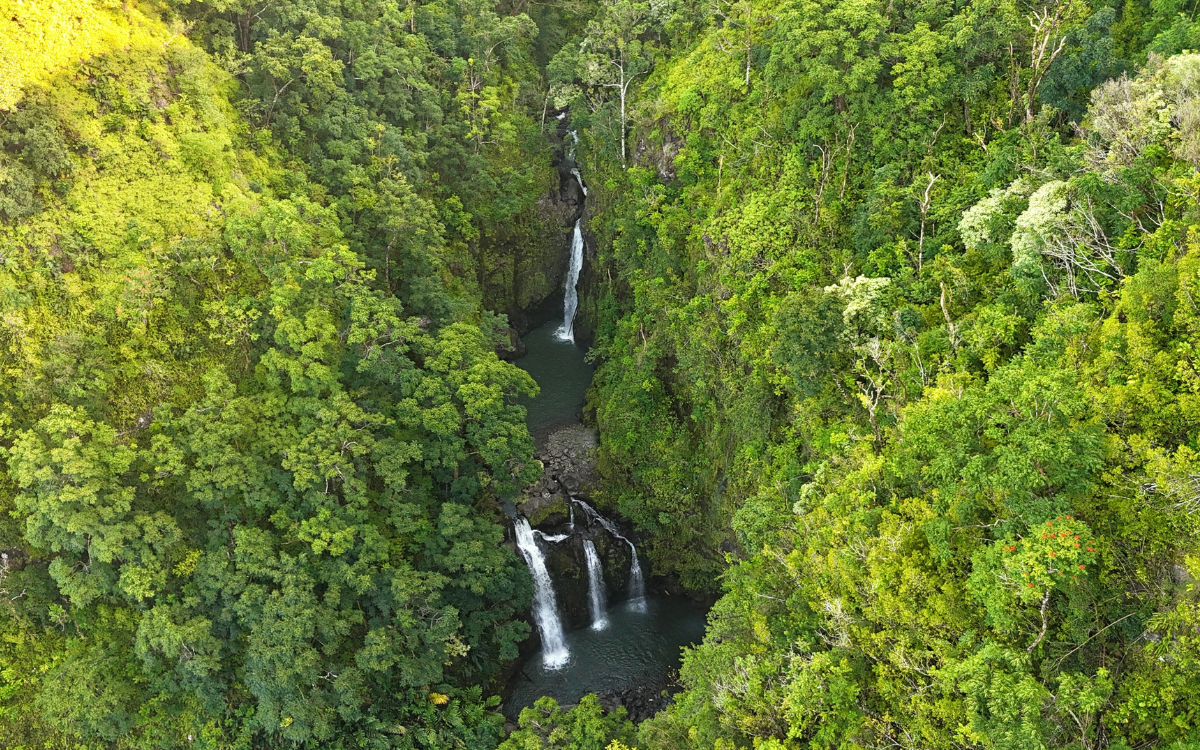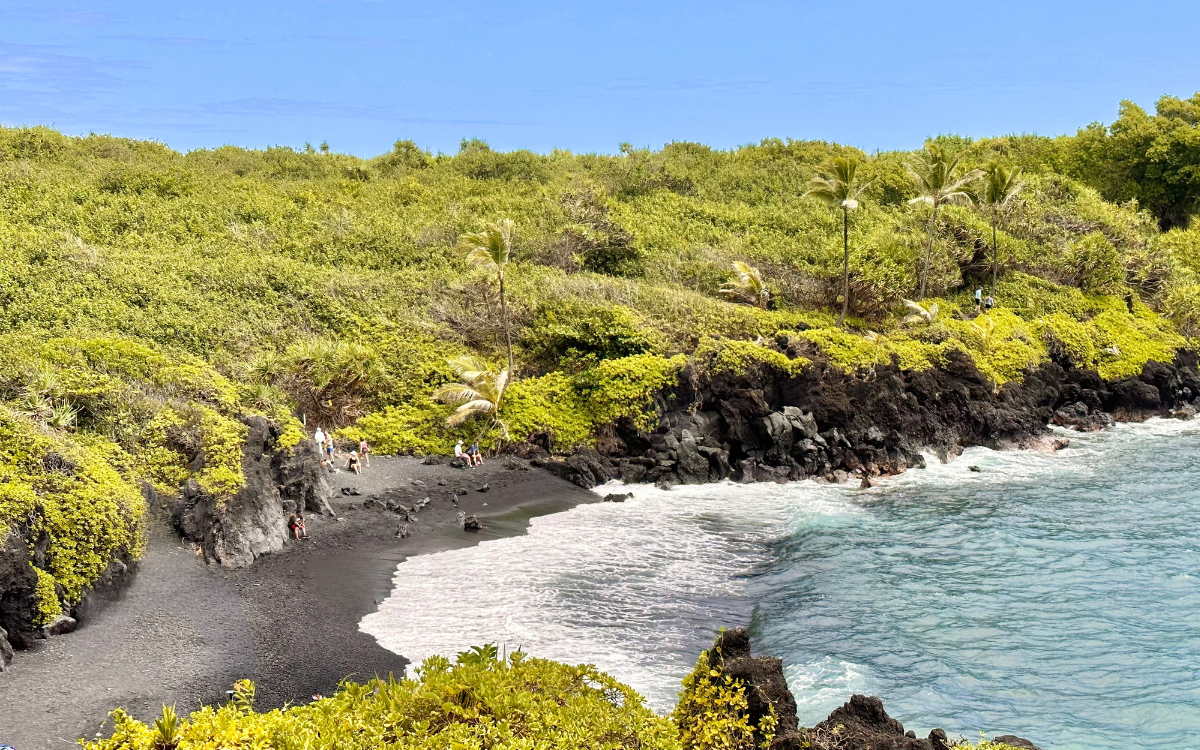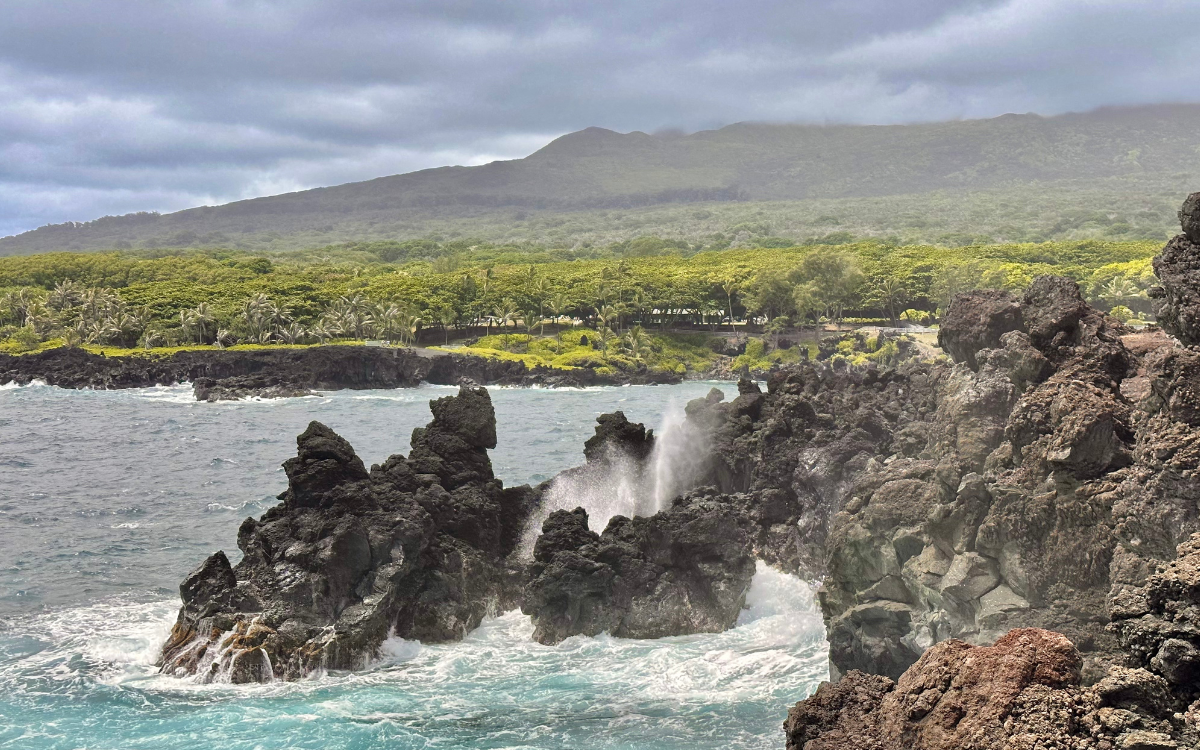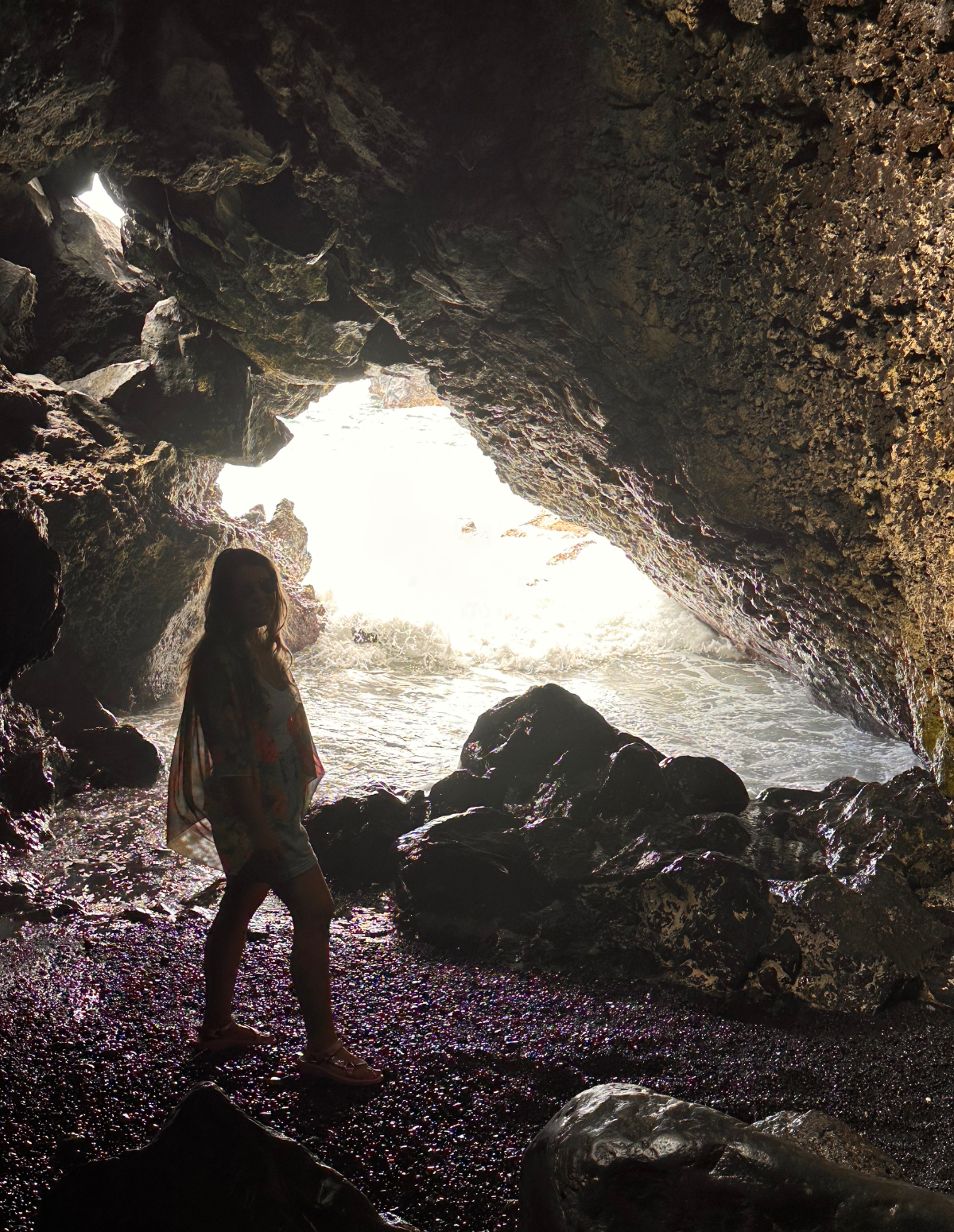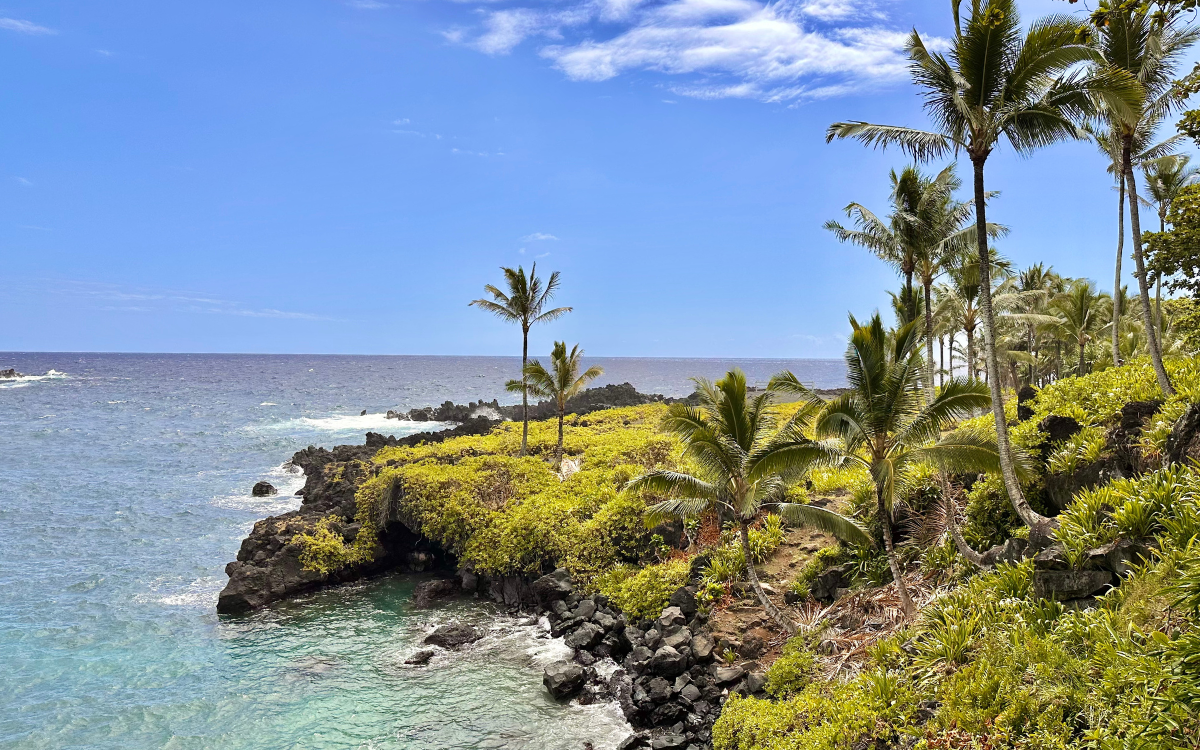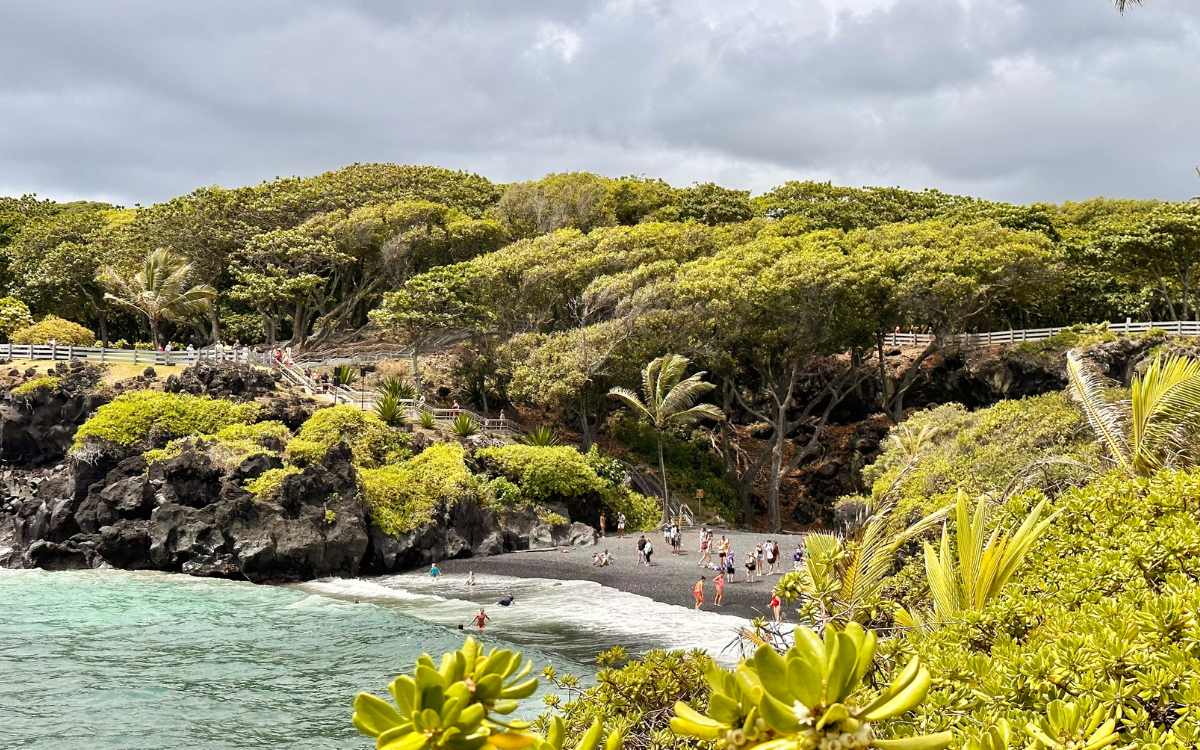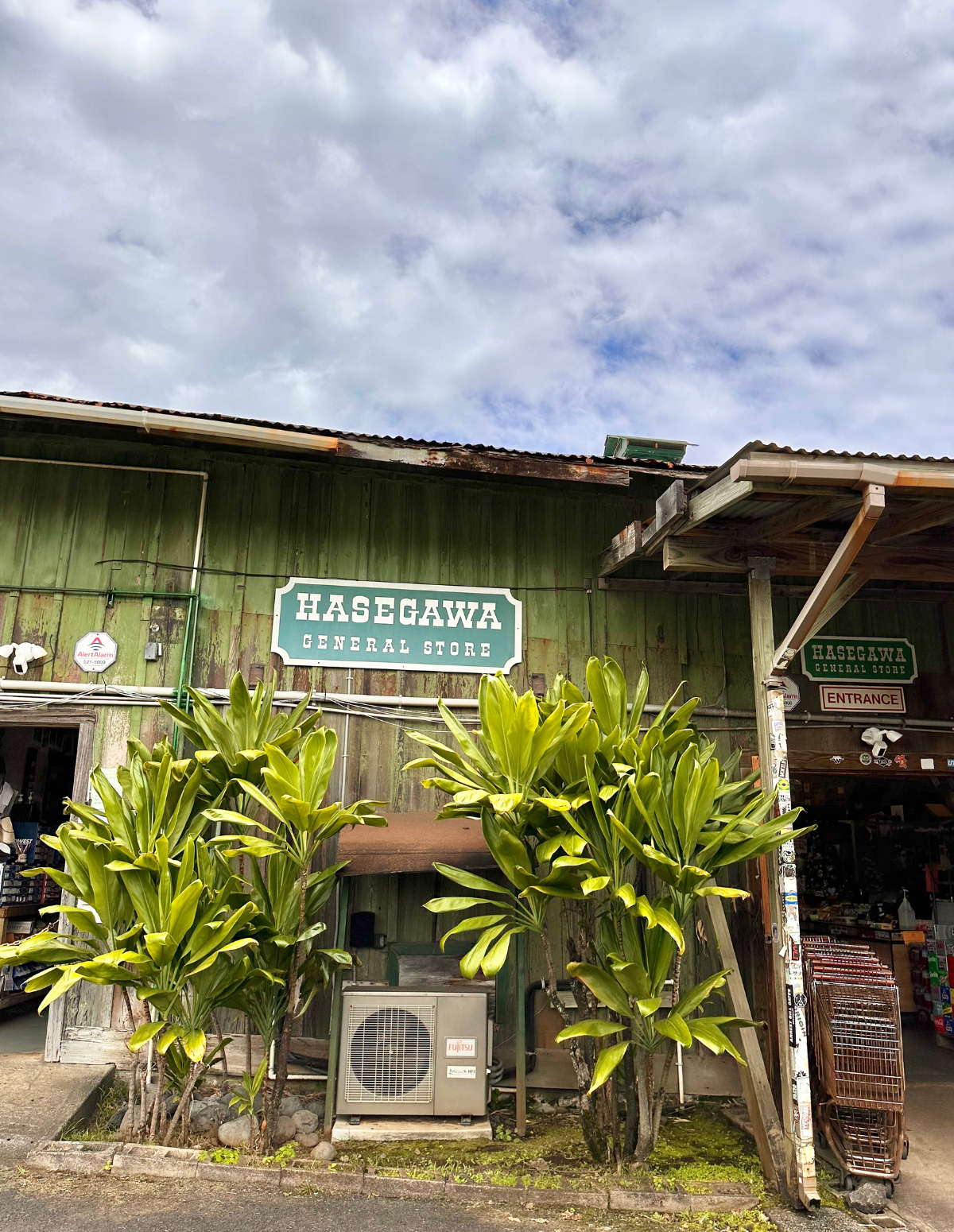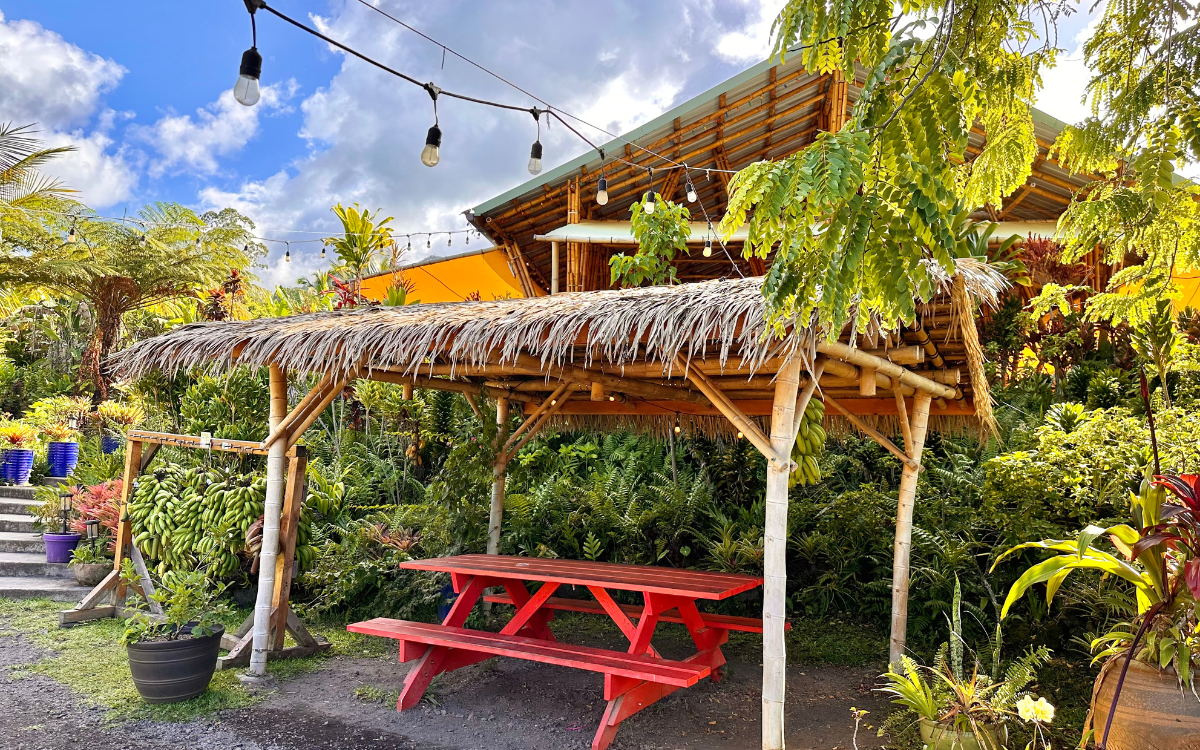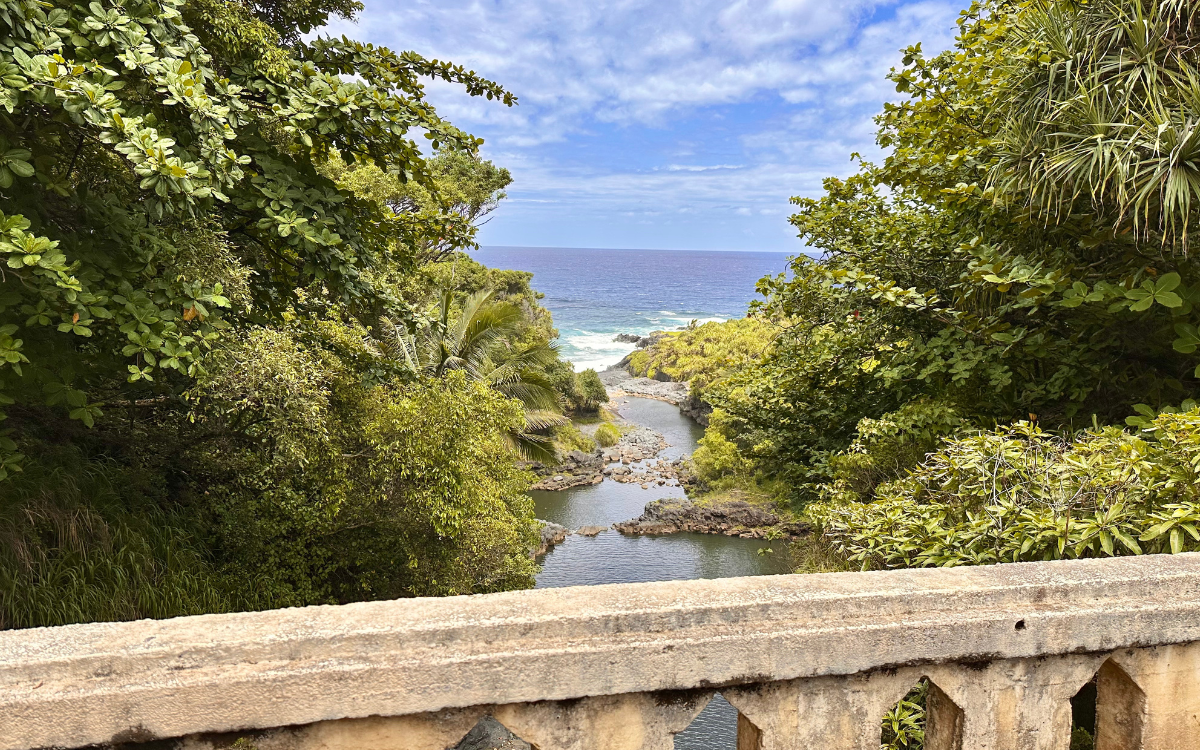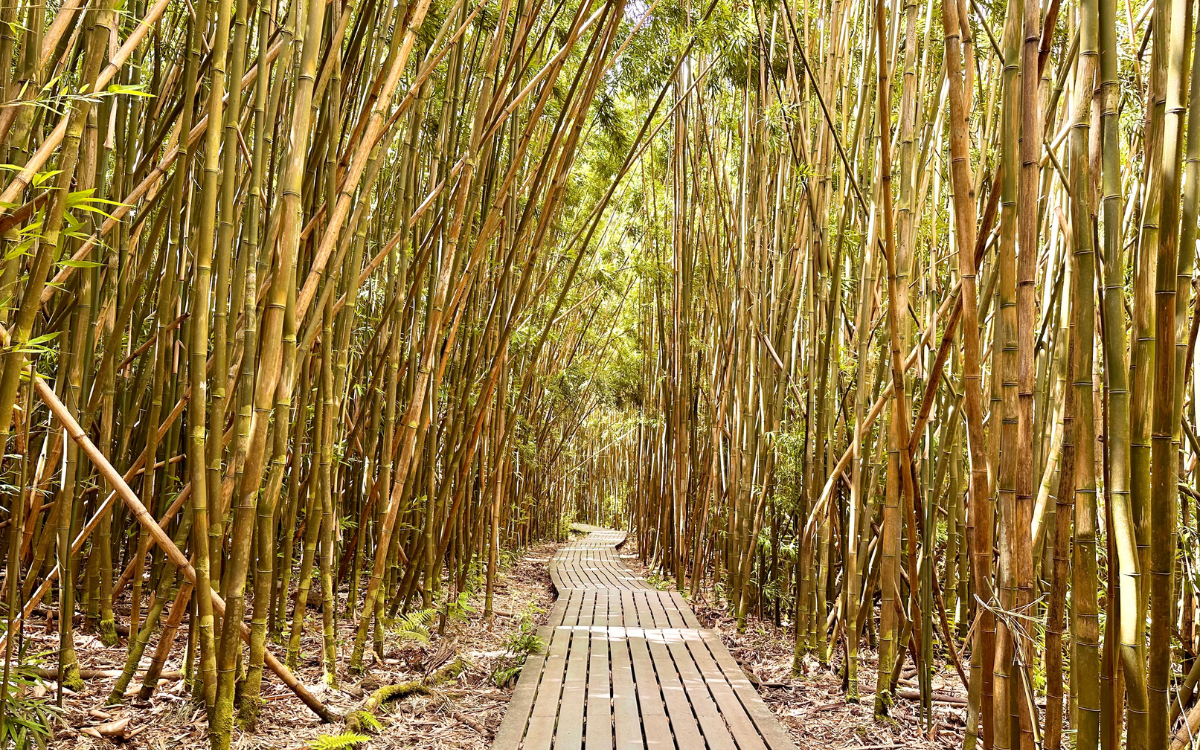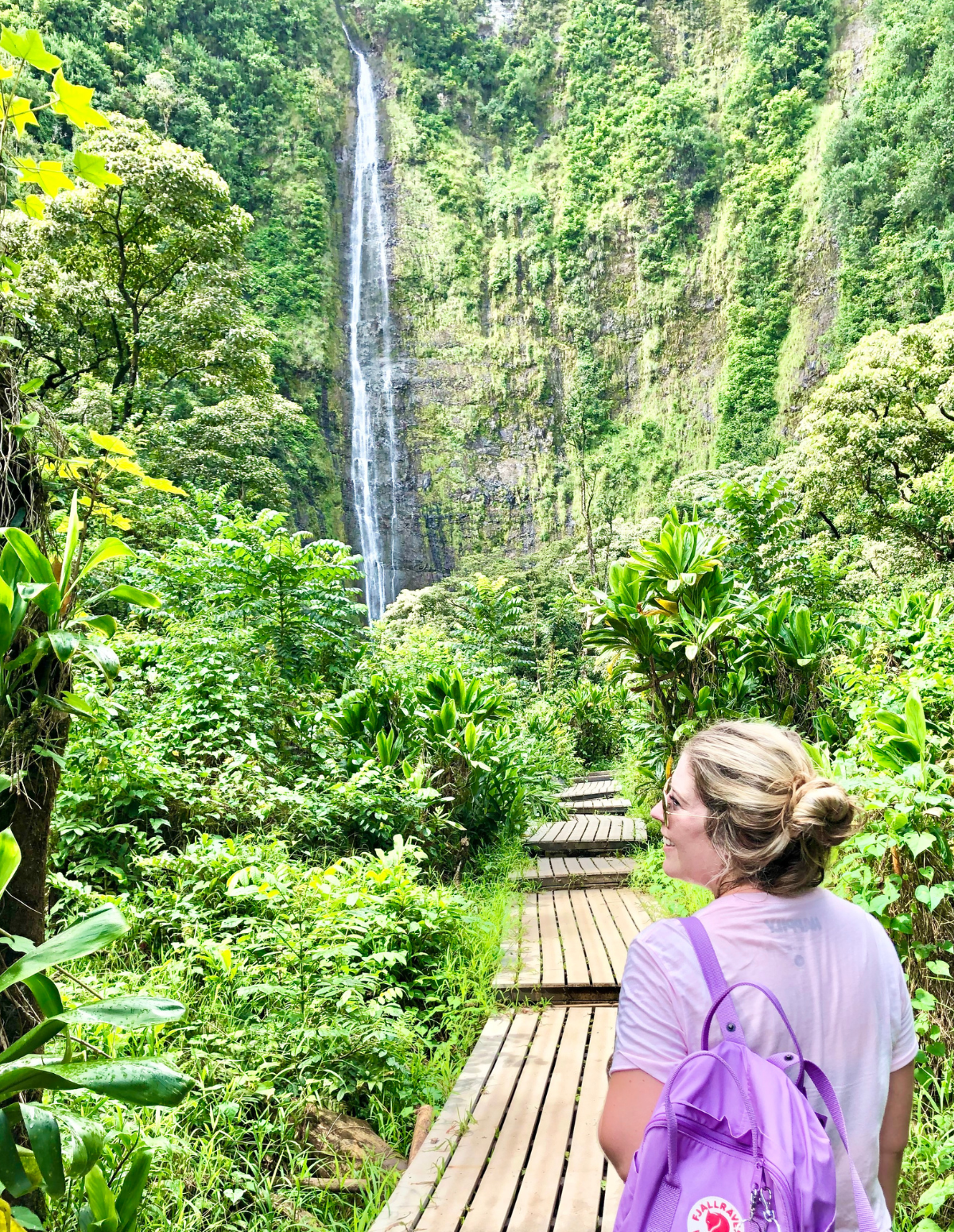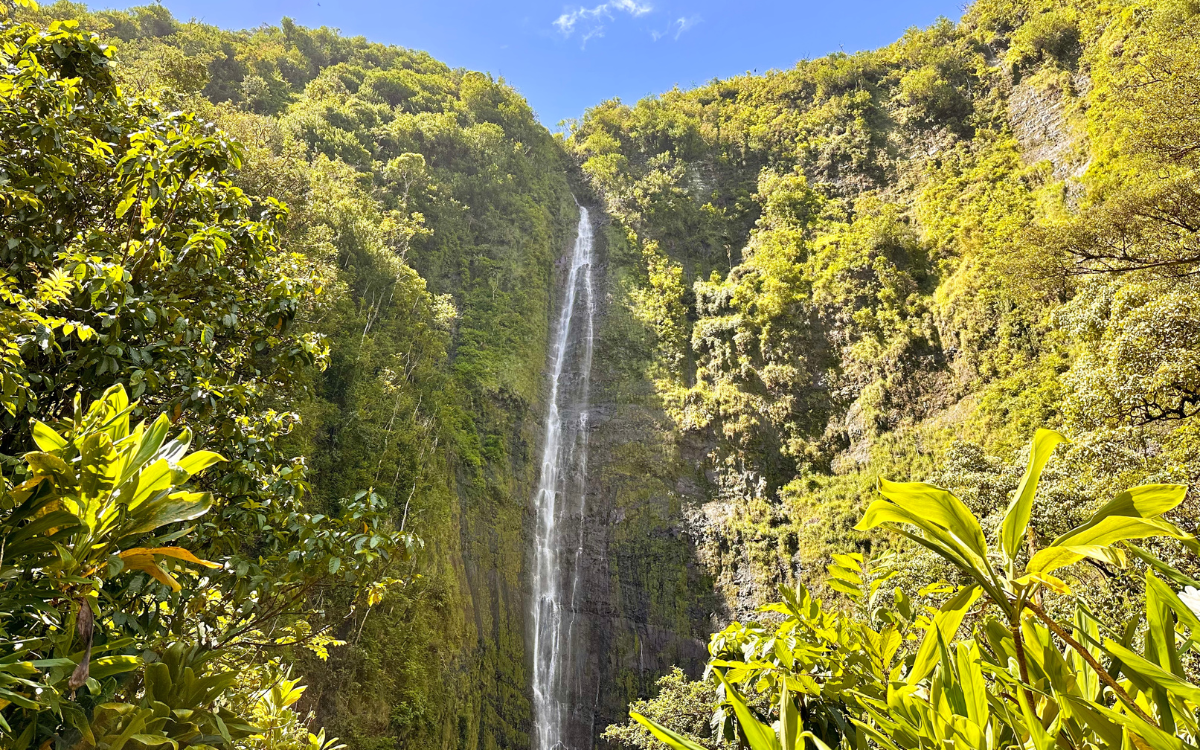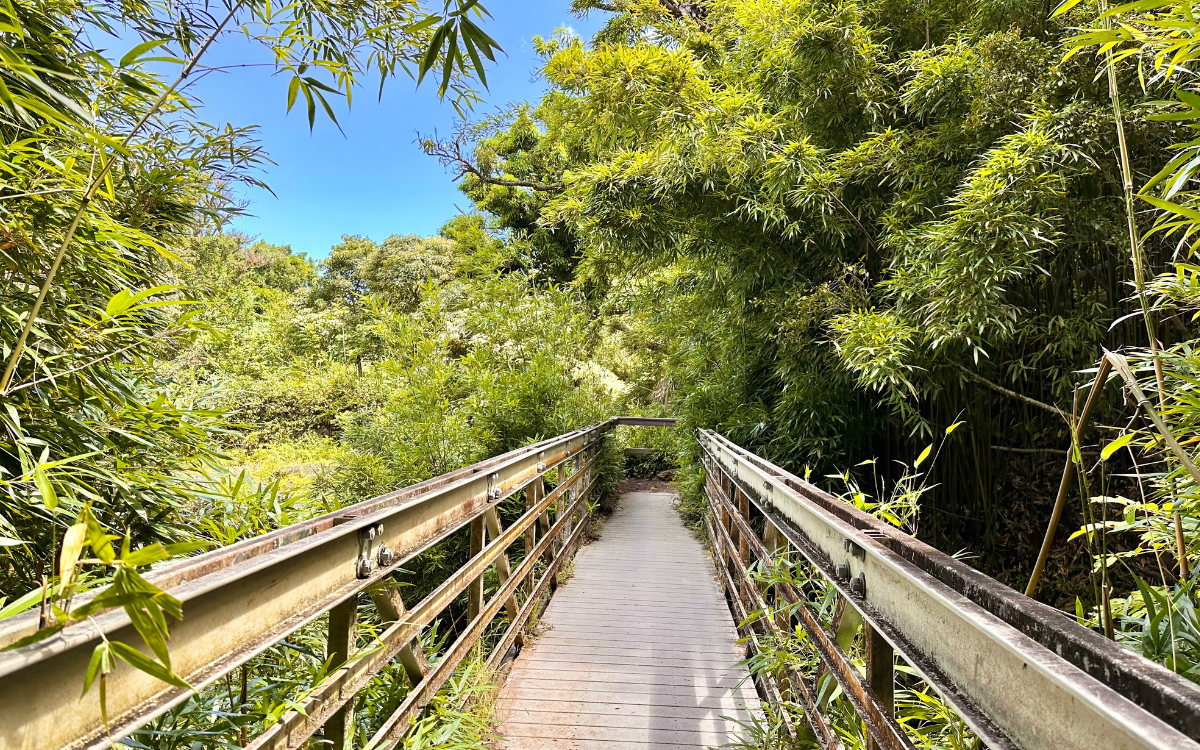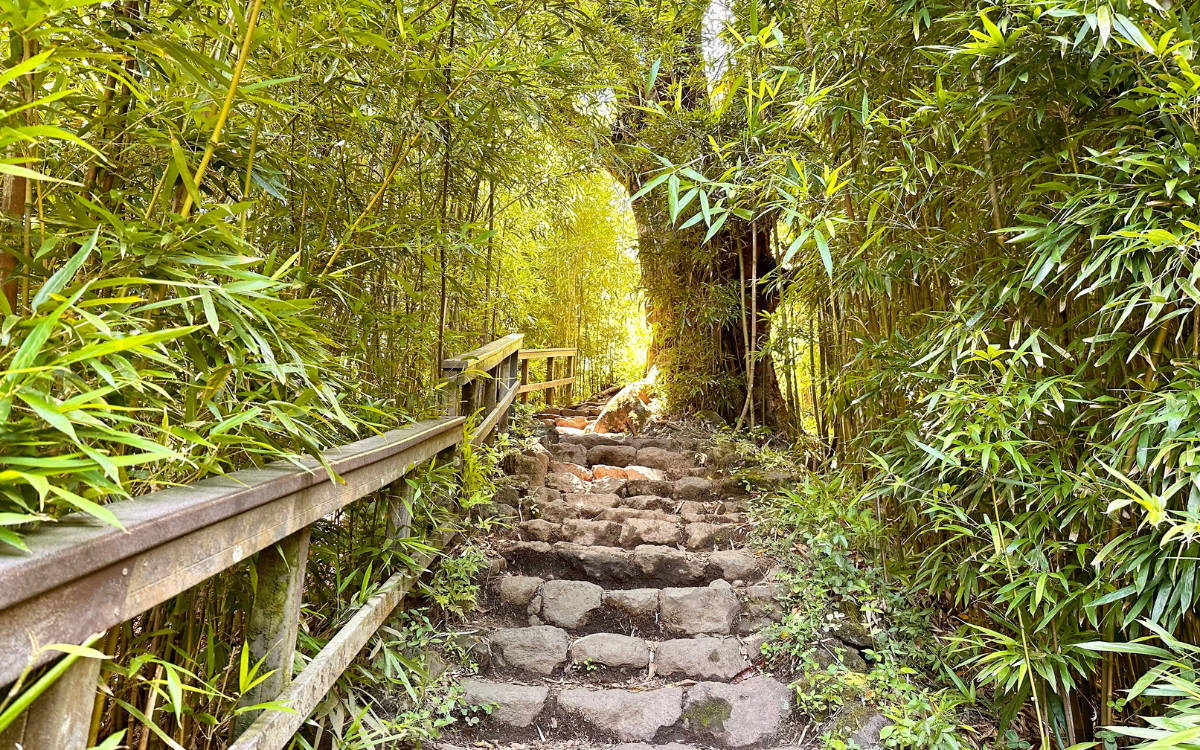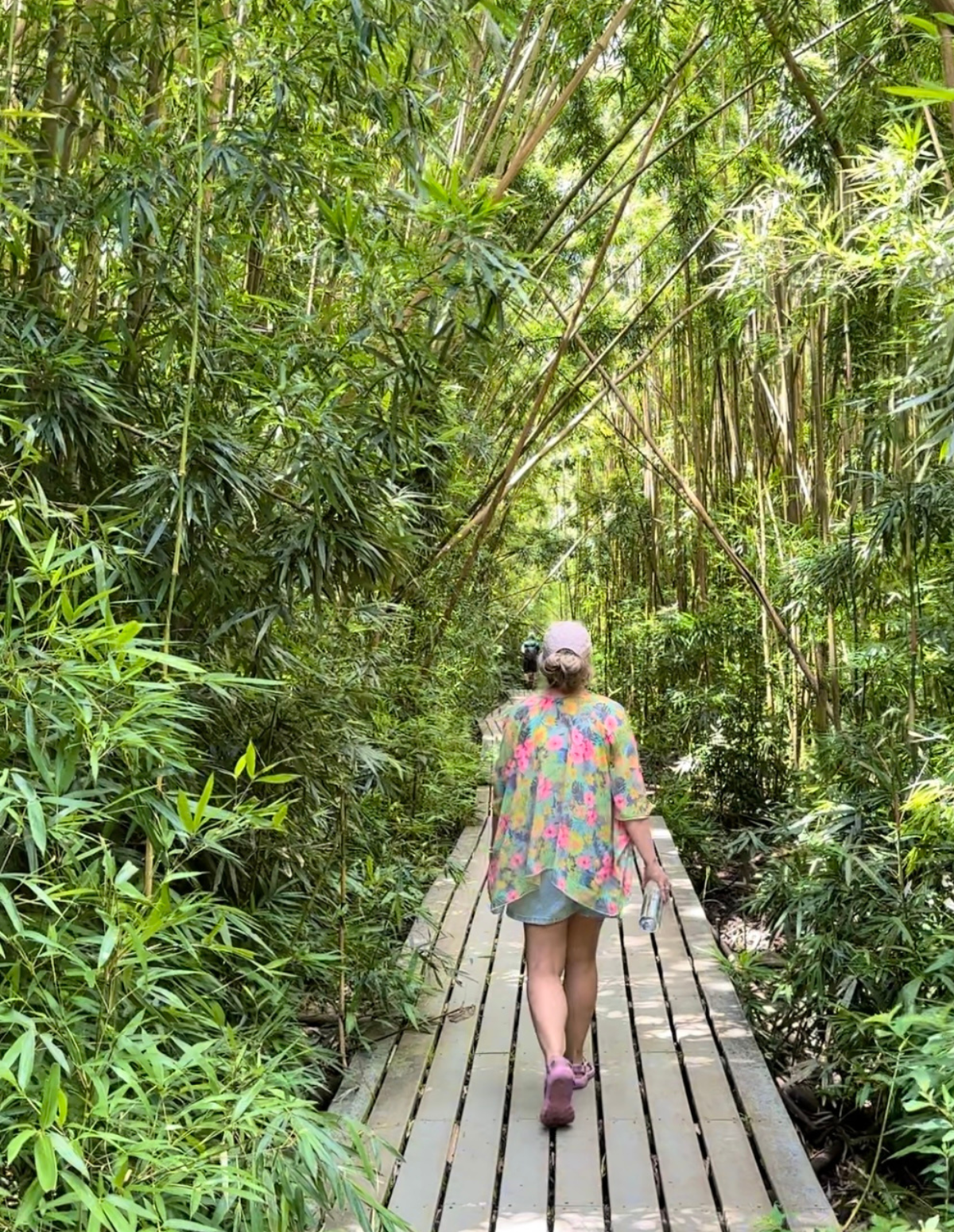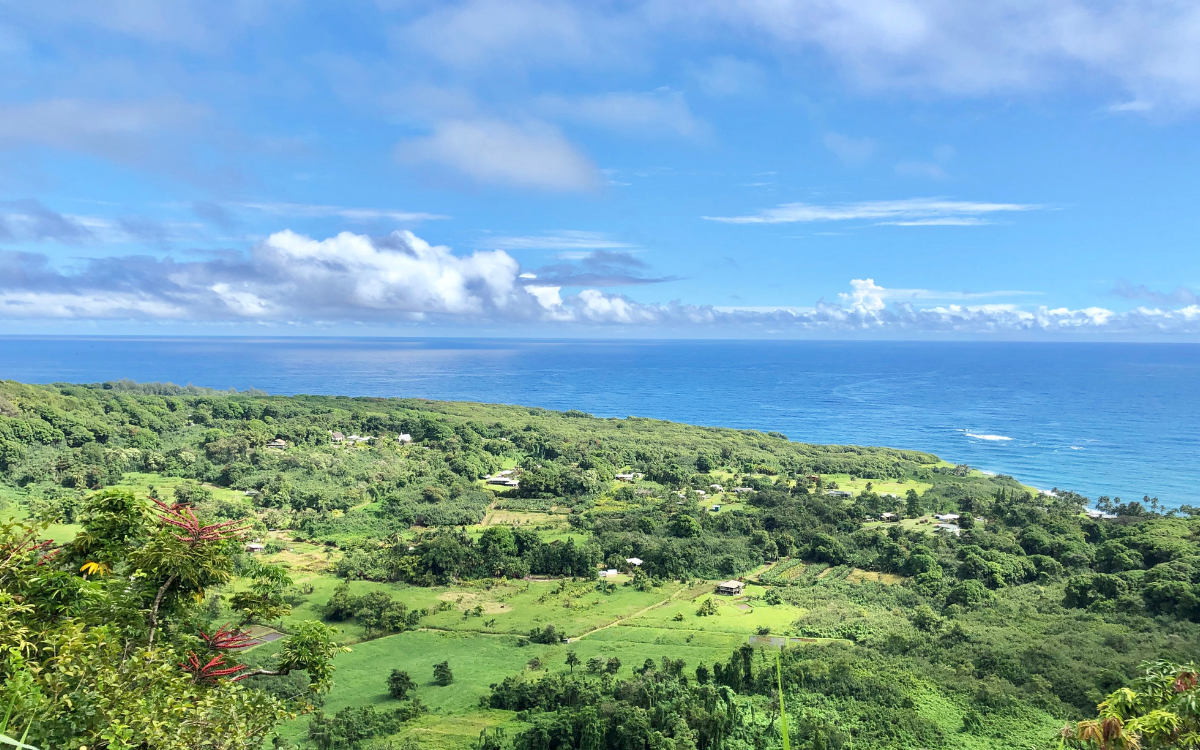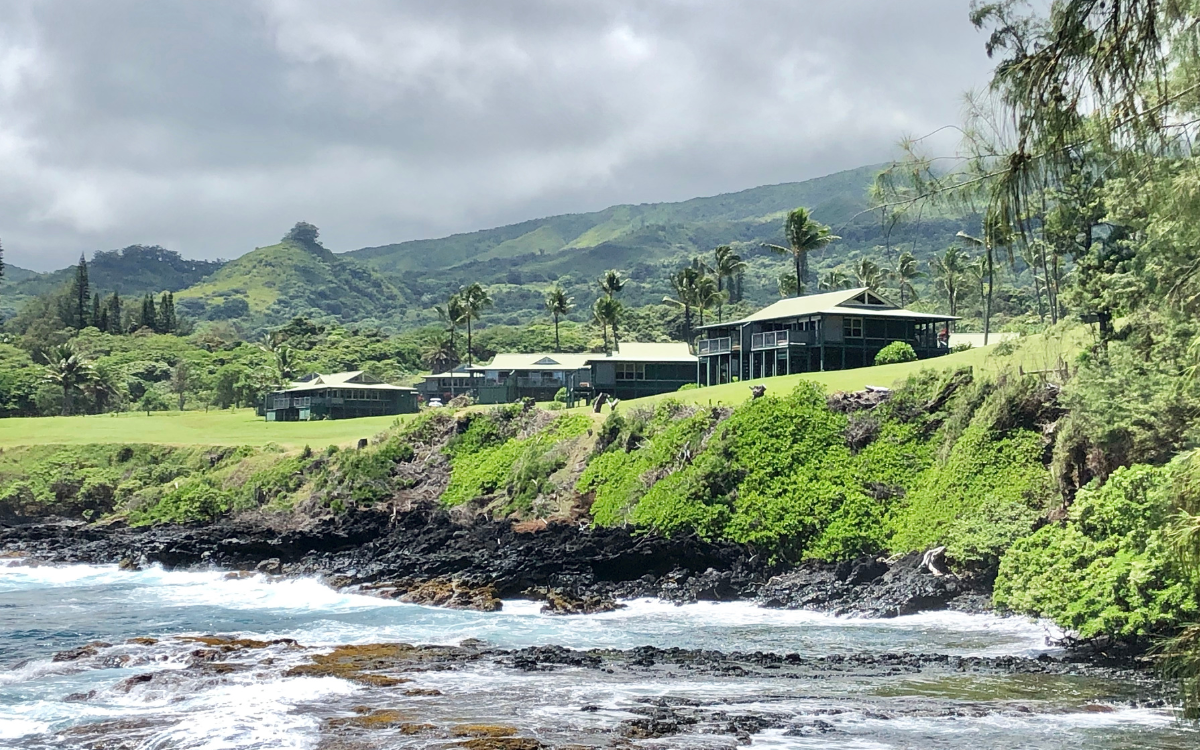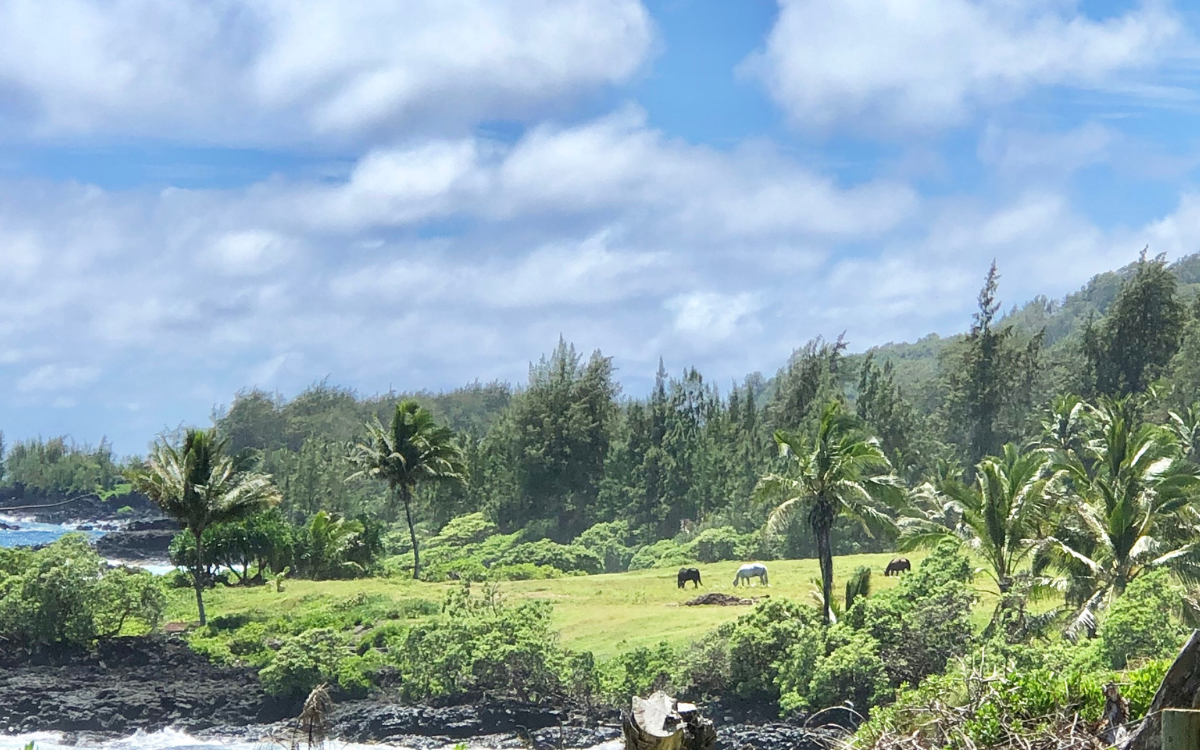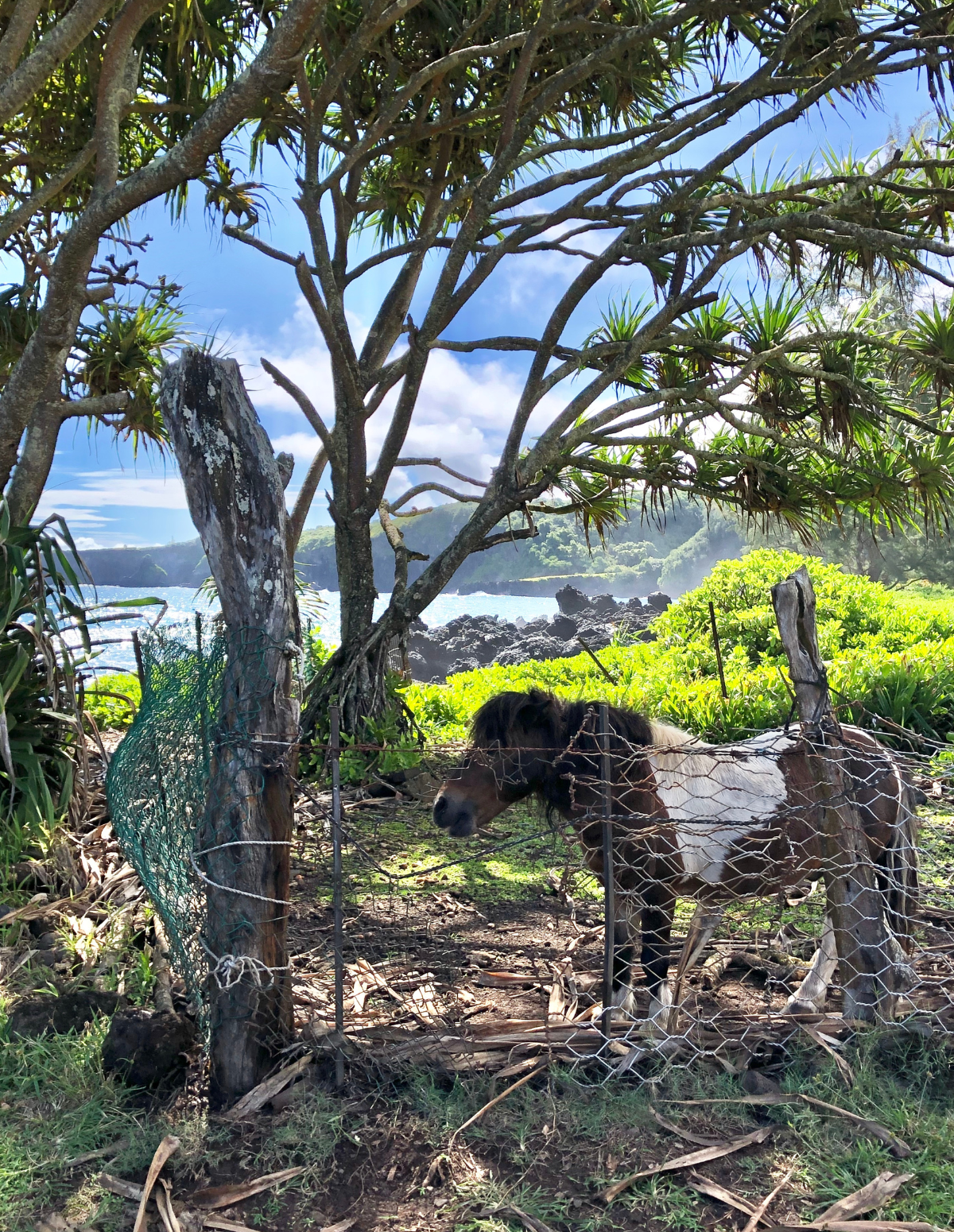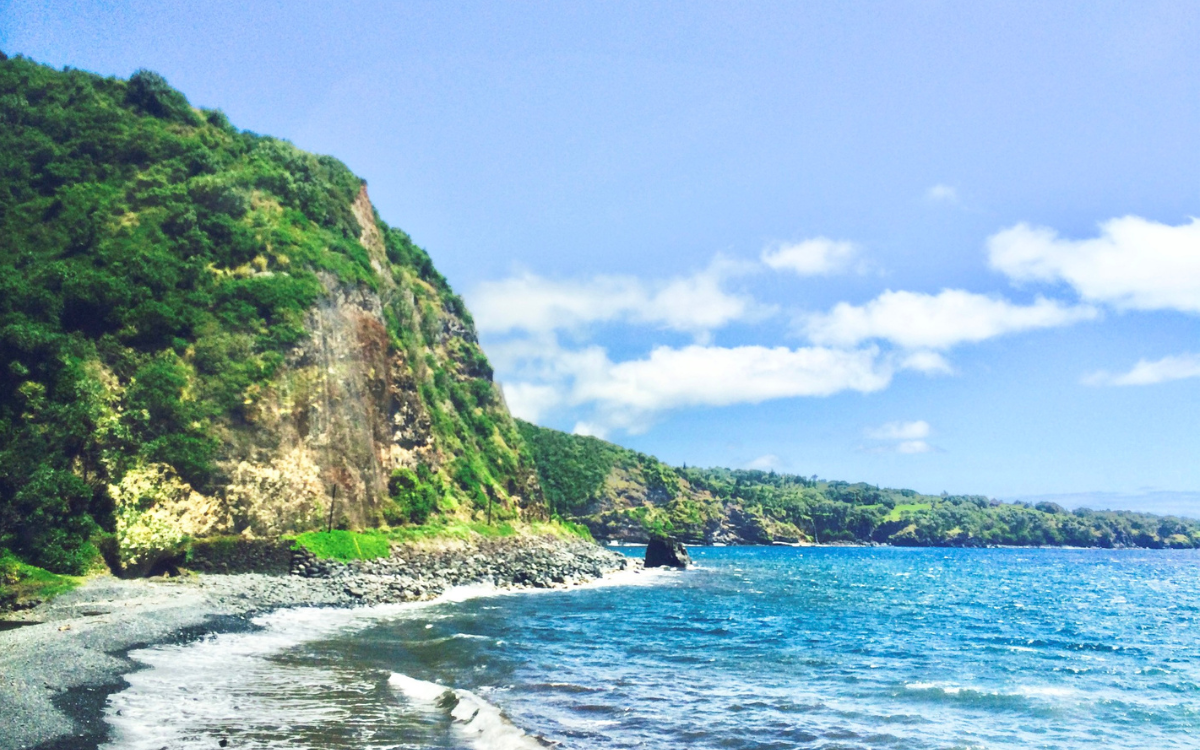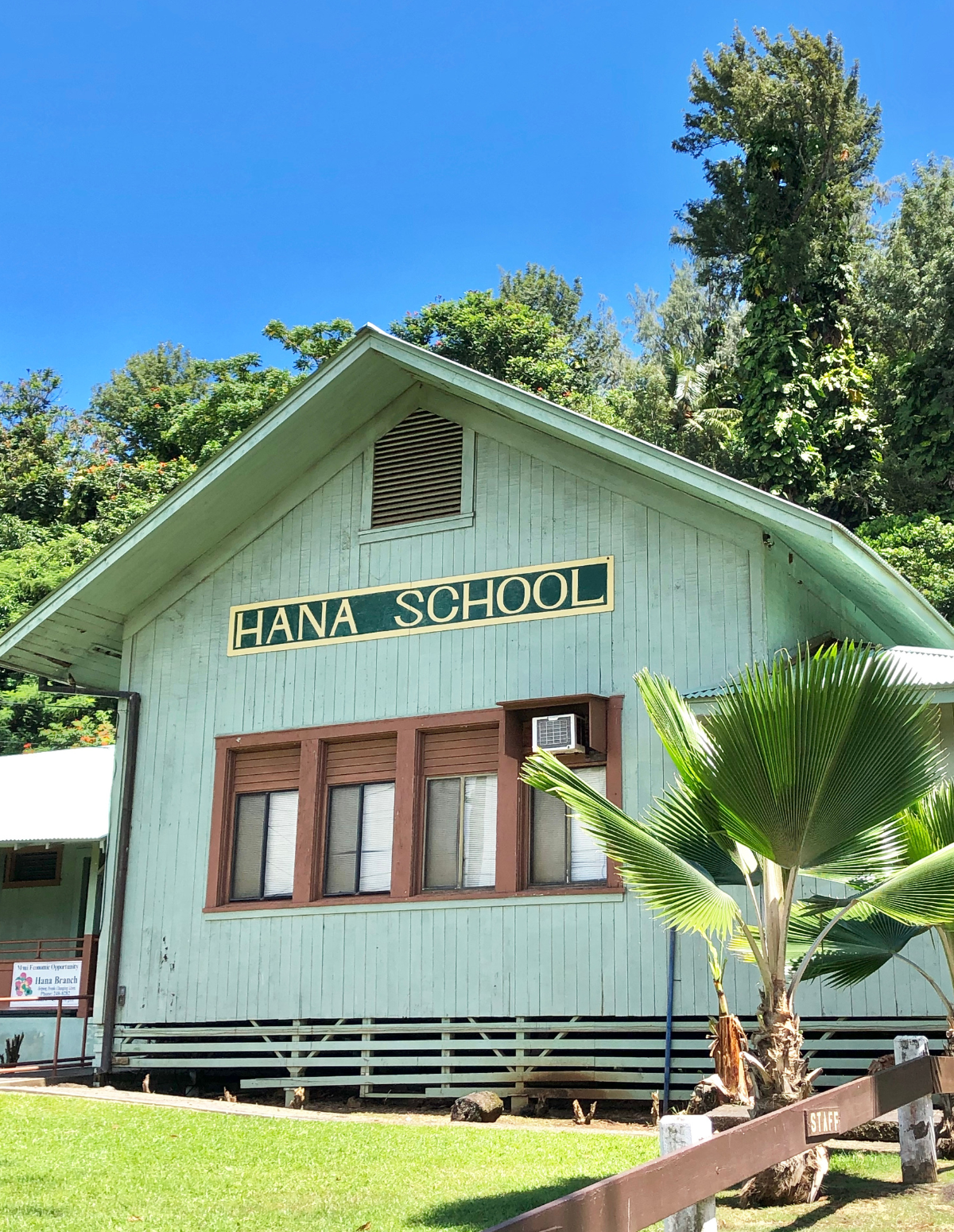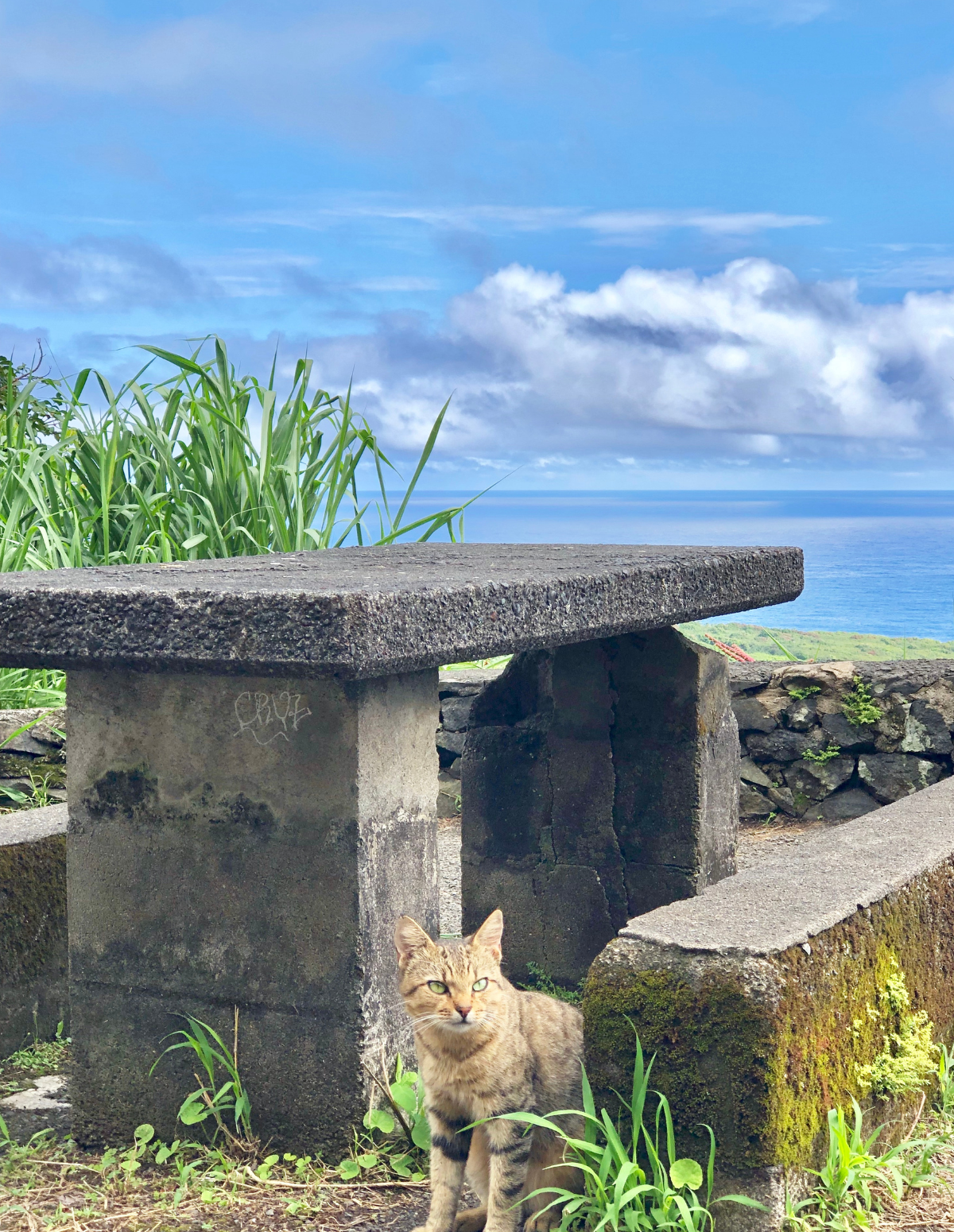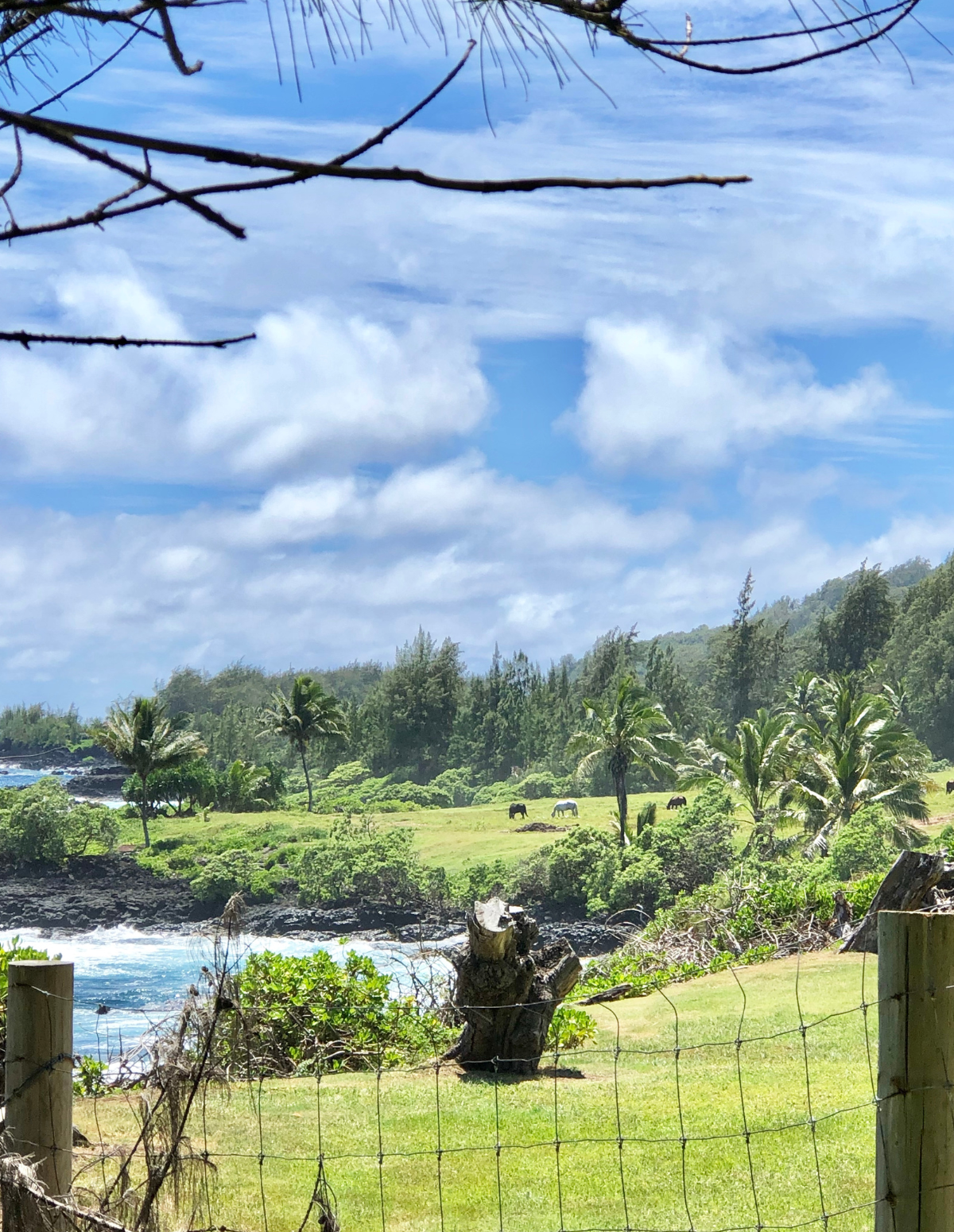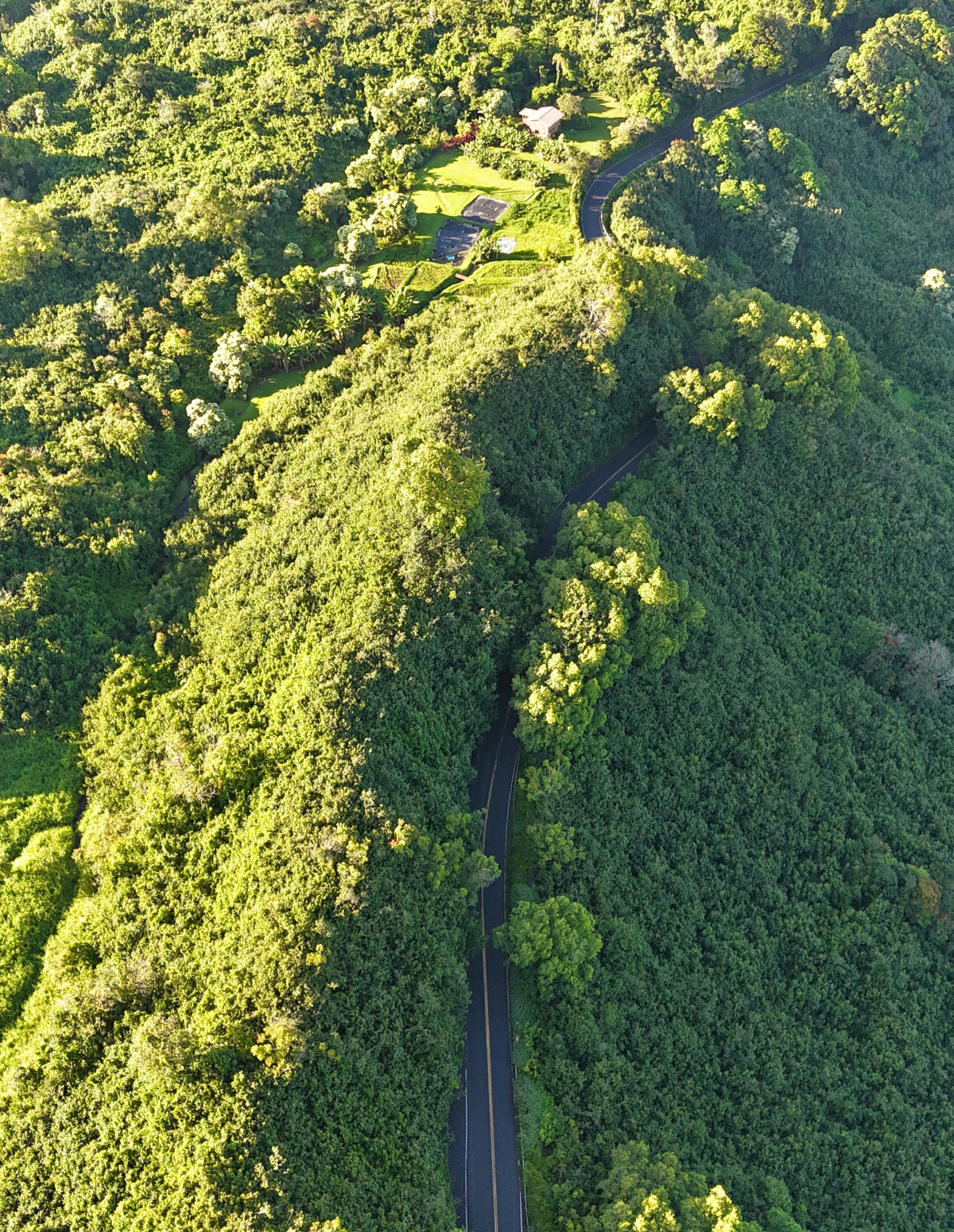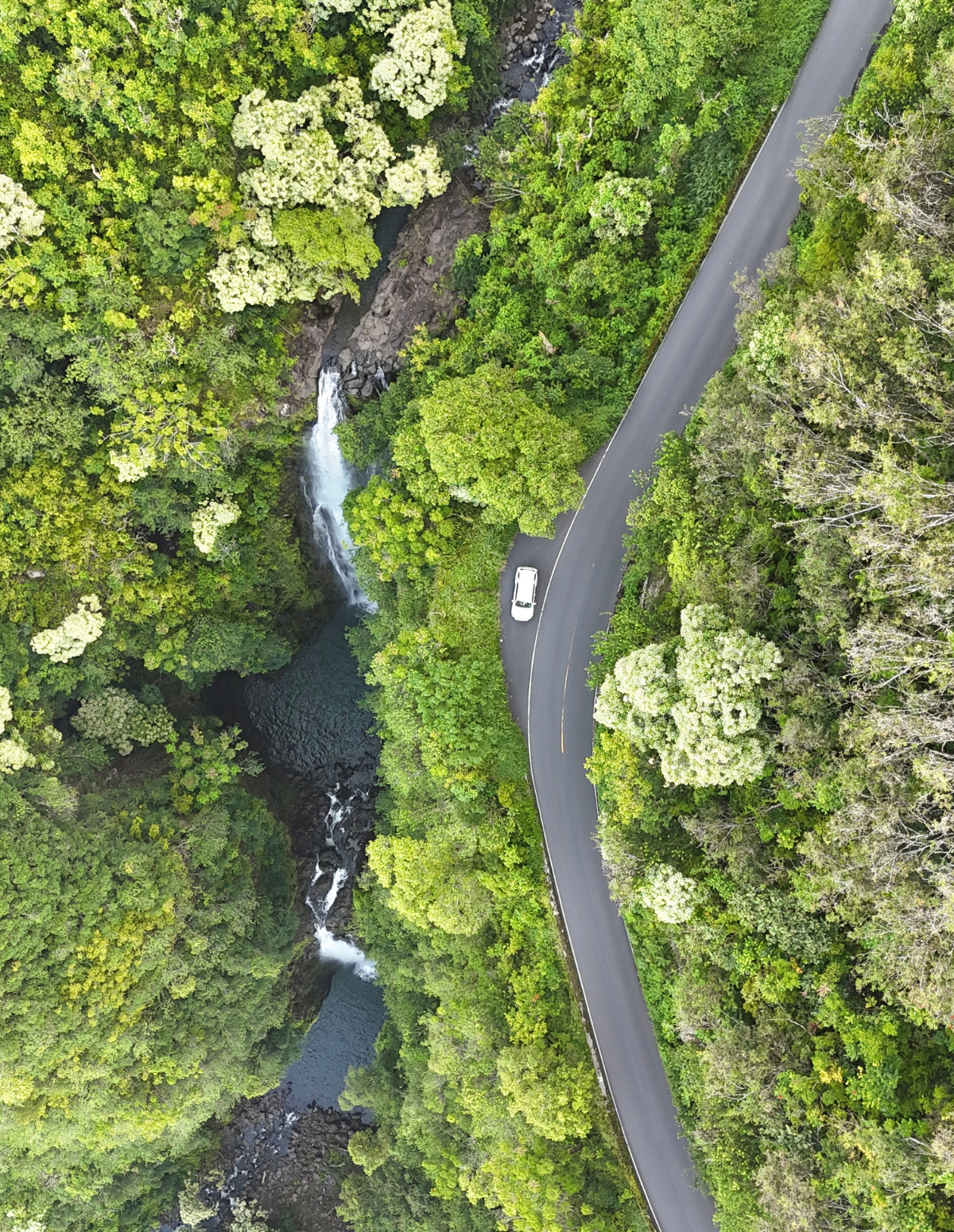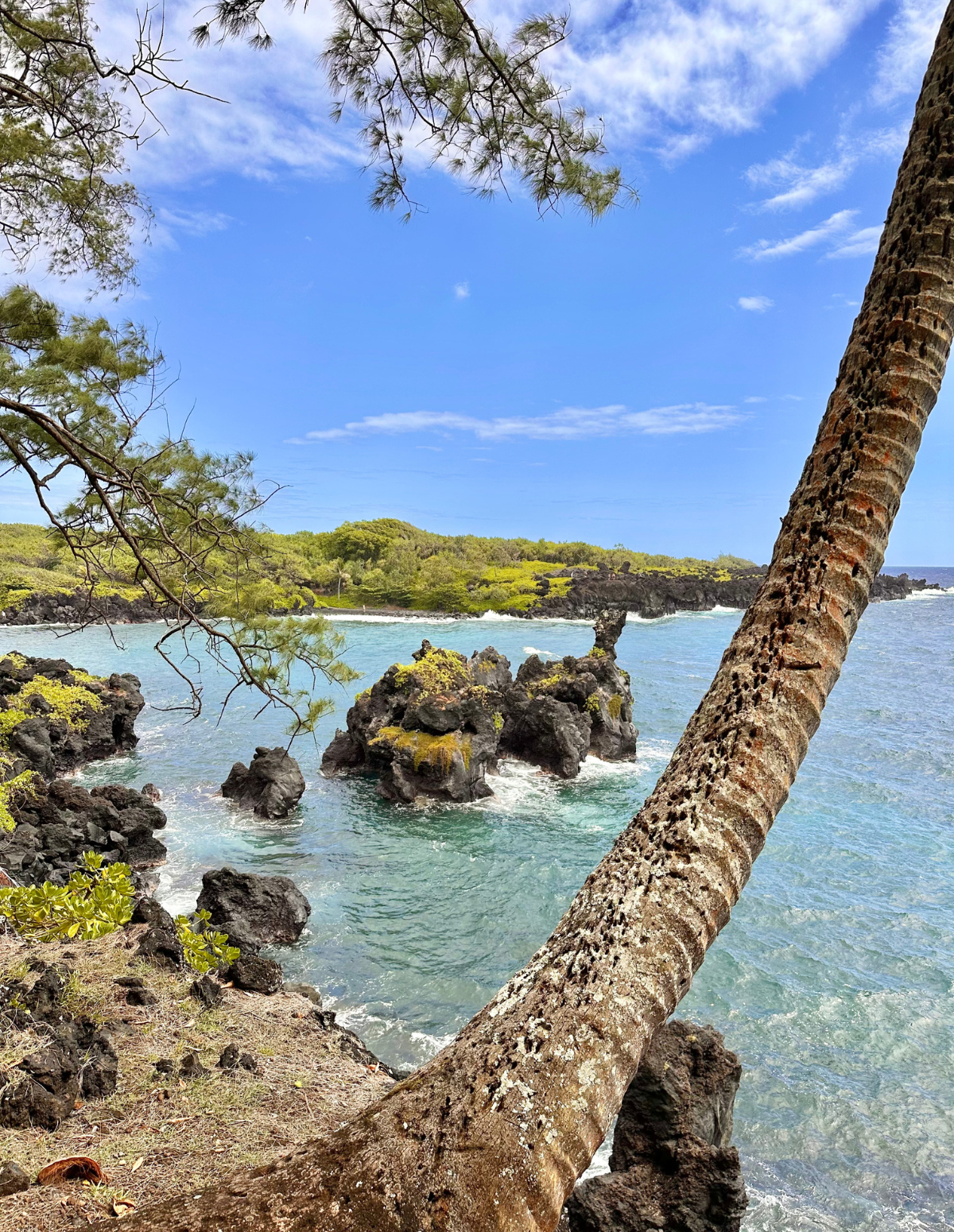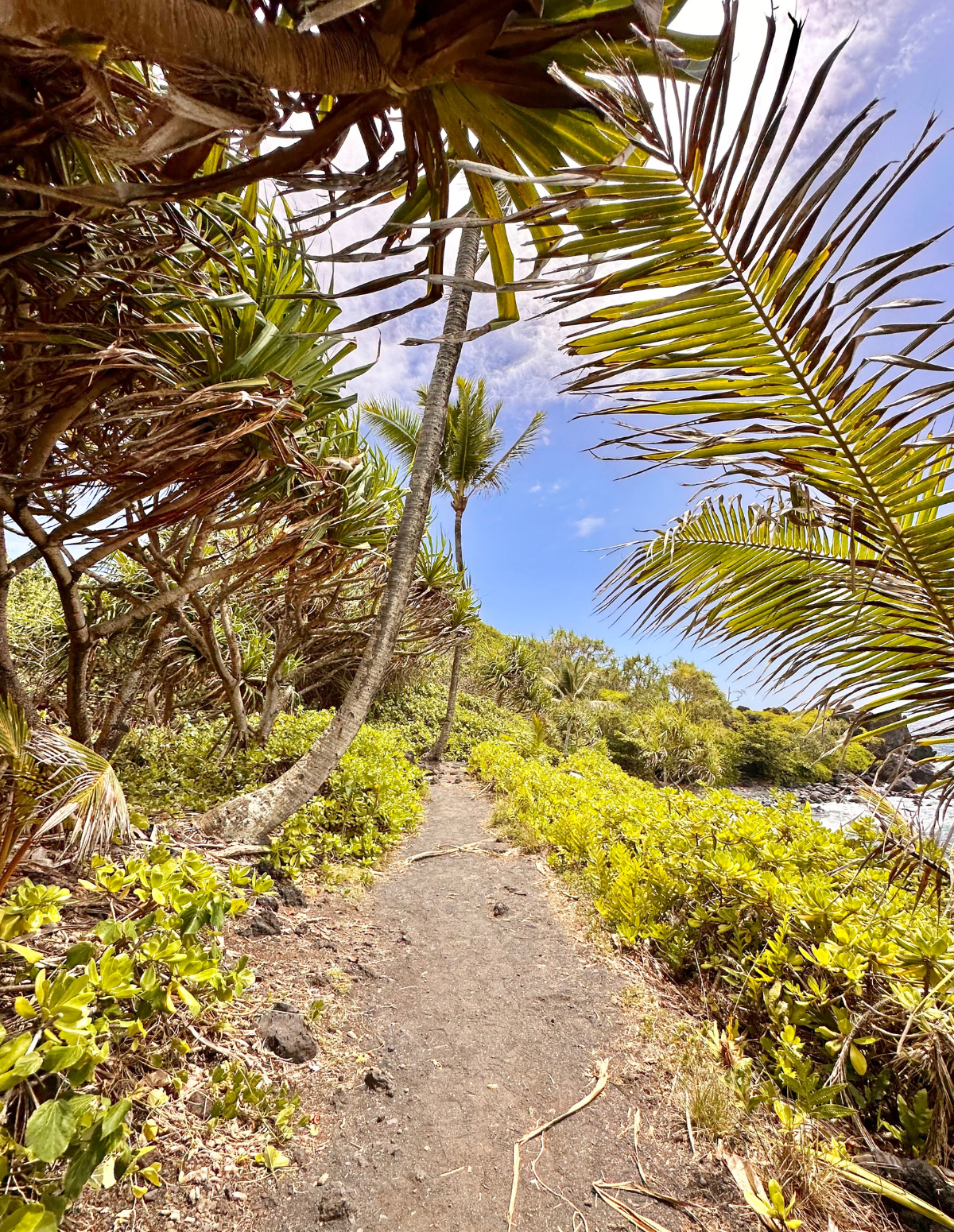My Favorite Road to Hana Itinerary + Tips for the Best Day
Maui’s Road to Hana is one of the most famous (or infamous) drives in the world and in my opinion is the #1 don’t miss thing to do on Maui.
What makes this drive so special? The Road to Hana is over 50 miles along Maui’s rugged north shore and east side with 600+ tight turns and about 50 one-lane bridges. Sounds fun? It is! While it has the reputation among many as being a hair-raisingly dangerous adventure, driving the Road to Hana is certainly a once in a lifetime adventure but not nearly as treacherous as many make it out to be.
I’ve driven the Road to Hana at least a dozen times. I’ve done it by myself, with a car full (including a baby in a car seat!), in a Jeep, in a sedan, and even in a full sized pickup. I’ve even done the backside of the Road to Hana (the road past Hana) many times!
Yes, it’s a great adventure…and it’s definitely not something you want to go into without a plan.
This post may contain some affiliate links, which means I’ll make a little money on anything you choose to purchase. But of course, I only recommend my absolute favorites to you. Thank you for supporting the brands that make Mousin’ Around possible.
Road to Hana Itinerary & Tips
In this post, I’m going to share:
- What to expect driving the Road to Hana
- Tips for driving the Road to Hana
- My favorite stops and recommended 1 day itinerary
- Should you visit the red sand beach and Venus pool?
- If you should drive yourself or do a tour
- If you should spend the night in Hana
- If you should drive the backside of the Road to Hana
- And…how to avoid crowds on the Road to Hana
What to Expect Driving the Road to Hana
I’ve already mentioned the 600+ sharp turns and 50+ single lane bridges so you probably already have a pretty harrowing image in your head right? Don’t worry, it’s really not so bad! The entire road from Paia to Hana (and even beyond) is entirely paved and has two lanes.
The bridges are not two lanes, however there’s an understood rule of letting 6-7 cars on either side pass at a time. In general, while the road is very winding, it’s relatively flat and there are plenty of guard rails and low walls to protect the road from the steep slopes.
What you can expect along the Road to Hana is plenty of beauty.
You’ll see colorful, lush vegetation, wide sweeping views and so many waterfalls. Perhaps the most important thing to understand about driving the Road to Hana is that it’s about the journey, not the destination.
While Hana is a charming and quiet little town, there isn’t much going on. So this drive is less about “hurry up and get to Hana” and more about enjoying the adventure.
Road to Hana Tips
Here are my best tips for driving the Road to Hana:
Be Considerate. First things first…Maui has been experiencing a surge in tourism since reopening from the pandemic shutdown. This has in turn resulted in higher than usual numbers of people driving the road to Hana everyday and it’s putting a bit of a strain on the local community.
While driving along this BEAUTIFUL road is considered one of Maui’s top attractions, it’s still an actual road and there are people that live in these remote communities that use it everyday. They’re driving to work, taking their kids to school, going to doctor appointments, etc. They’re not on vacation. And while they’re very welcoming, they’re getting increasingly frustrated at the huge numbers of visitors coming to Maui (and the current infrastructure’s inability to handle them).
So a few simple rules: Don’t trespass on private property. Don’t park illegally on the road. Don’t stop in the middle of the road to take a picture of a waterfall, a rainbow eucalyptus tree, a gorge, an ocean view, a mongoose, a rainbow, or anything else. If you’re driving slowly and there’s a local behind you, pull over and let them pass. They have somewhere to be. Just be kind and aware of your surroundings and yield to the locals whenever possible. And remember, you are in their HOME so use those manners your mama taught you.
Get an early start. This is my #1 tip for having a pleasant day driving the Road to Hana. I wouldn’t want to be leaving Paia any later than 8AM. Getting an early start will be the single biggest factor in having lower crowd levels at all of the stops along the drive.
Have a plan. Yes, the fun is in the adventure, but you are going to have such a better adventure if you have a plan for it. The road is long (50 miles just to reach Hana plus more if you go beyond) and chock full of overlooks and little sites to see, hikes, waterfalls, pools to swim in, beaches, roadside stands, botanical gardens, etc. If you stop everywhere, it would take you DAYS to do the whole thing and if you only have one day and you spend the first few hours lollygagging around the first few stops you come to, you’ll probably end up missing out on the best stuff which is towards the end.
Even if you’re using one of the GPS tour guide apps, you’ll need to have a rough plan of where you’re going to stop so you can budget your time. You don’t want to get past Hana and find out there’s a world class hike through a bamboo forest, but it’s getting dark and you don’t have time to do it because you spent too much time at Twin Falls at the beginning of the day.
Make reservations for Waianapanapa State Park. Hey this is why it’s good to have a plan! Imagine rolling up to Hana’s spectacular black sand beach and finding out you can’t see it because you didn’t make a reservation. Womp womp. Starting March 2021, all non Hawaiian residents must have a reservation for parking and entrance to Waianapanapa State Park (the black sand beach). Reservations can be made 30 days in advance (and no later than the day before). Unlike reservations for sunrise at Haleakala, they don’t seem to sell out 2 minutes after they become available, but you definitely don’t want to sleep on it. You’ll make your reservation for one of four time slots: 7AM-10AM, 10AM-12:30PM, 12:30PM-3PM, and 3PM-6PM. They are strict with the entry and exit times. The two time slots in the middle of the day are the ones that sell out first. It’s $10/vehicle for parking and $5/person for entry and you have to pay for it all when you book the reservation.
Fill up your tank. Make sure you have a full tank of gas when you leave Paia. There’s a gas station in Hana (where it’ll cost you quite a bit more), but that’s it.
Plan for motion sickness. I’ve been blessed with an iron stomach, but people who struggle with motion sickness say the Road to Hana is brutal. In fact, if you get severe motion sickness, it could make driving to Hana a deal breaker, but if it’s mild to moderate for sure have medication (or arm bands or whatever you use) with you.
Take cash. You never know when you’re going to need it. Many of the food trucks and spots in Hana take cards, but it’s definitely not the kind of place you’d want to be without cash. A lot of the roadside stands will only take cash.
You don’t need four wheel drive. The road from Paia to Hana is completely paved and even beyond Hana you won’t need four wheel drive. Jeeps and Mustang convertibles are the most popular rentals with tourists, but I personally would not want to do this drive in a convertible. It rains too often and rockslides (even tiny ones) aren’t terribly uncommon. A Jeep is fun, but not necessary. Smaller cars (shorter length) are preferable to bigger cars for negotiating tight spots (this pretty much goes for anywhere in Hawaii).
Prepare for no cell service. You’ll have patchy cell service until you get to Hana, and no cell service on the backside past Hana. Download your Spotify playlists before you go, have a general sense of where the big spots you’re stopping at are. If you’re using a GPS app like Gypsy or Shaka, they won’t require cell service to run, but they will DRAIN your phone battery so make sure you have a charger.
Wear the right clothes. I dress for hiking, getting in and out of the car a lot, and being generally pretty grubby. I don’t dress for the beach. There are freshwater pools and ponds that people like to swim in (everybody wants to swim under a waterfall don’t they?), but I can’t think of many things more miserable than being in and out of the car all day in a wet swimsuit. I also don’t get in the water at the black sand or red sand beaches in Hana (again I don’t like being in the car in a wet swimsuit but they’re also not good swimming beaches). So I usually wear a swimsuit under my clothes because you never know, but I’m not running around in a coverup and flip flops all day. The most important thing for me is sturdy shoes (they can be sandals, but they need to be strapped onto your feet) that you don’t mind getting muddy and wet.
Pack a bit of everything. I do take towels or a beach blanket and you’ll for sure want sunscreen and bug spray. I’ve actually never been bothered by mosquitos in Hana (they don’t like me though), but I know people who have been absolutely eaten up at different hiking spots. If you have a cooler, it’s not a bad idea to bring water or snacks although there are plenty of places to stop (if you’re going past Hana though you’ll definitely want to stock up there). Hats, sunglasses, baby wipes, phone chargers, etc. I’d take a mix of hiking and “going to the beach” gear.
Get back before dark. I don’t like being on the road after dark so that’s why I always like to have a plan for where I’m going to stop and how long I’m going to spend at each place.
***Want to save major $$$ on your trip to Hawaii? I get asked ALL the time how I’m able to travel so often to Hawaii and stay at really nice resorts. Well, my favorite travel hack is cashing in points to score free airfare and free nights at some of Hawaii’s most high end resorts. Read my full guide on the exact system I use to max out credit card rewards here. Seriously, it’s going to save you soooo much money.
My Favorite Road to Hana Itinerary
If you’ve read many blog posts or done much research about the Road to Hana, you’ll know that there are about 6709 must see stops out there. I swear blogs compete with each other to see who can suggest the most stops.
So….I’m kind of the opposite of that. I like to keep it simple. For me, driving the Road to Hana is about the actual drive–it’s seriously one of the greatest drives you’ll ever do without even getting out of the car–and I like to mostly enjoy the drive and only stop for the very best stops.
I don’t know about you but NOTHING wears me out quicker than being in and out and in and out and in and out and in and out of the car all day.
So this is a very streamlined list of stops along the Road to Hana. The best of the best if you will. Also, I’m perfectly fine just “driving by” a lot of stuff. The Road to Hana is not the Audubon. You’re not flying along at 100 miles per hour. You’re going slow enough to soak it all in. I realize this is not everyone’s travel philosophy, but bear with me.
But I will say, I do like pulling over at overlooks or anywhere it looks like there’s a good view. I just don’t feel the need to go down every little hiking trail or try to park and scamper down some rocks to get 10 feet closer to a waterfall.
All that being said, whenever I’m taking people on a Road to Hana day trip for the first time, I have two major priorities: 1) Waianapanapa State Park (the black sand beach) and 2) the Pipiwai Trail in the Kipahulu District of Haleakala National Park.
My Favorite Road to Hana Stops (in Order – Clockwise)
Grab coffee and a quick breakfast near wherever you’re staying, or stop in Paia at either Paia Bowls, Paia Bay Coffee or Belle Surf Cafe.
Here are the best places to spend your time on the Road to Hana (and sights to keep an eye out for):
Rainbow Eucalyptus Trees
Starting around mile marker 6 or 7, you’ll pass groves of rainbow eucalyptus trees fairly often (depending on where they are in their shed cycle sometimes they’re easier to spot than others. Parking is pretty tricky along this stretch so unless you’re passing through early sometimes it’s not so easy to pull over.
Further down the road at the Keanae Arboretum there’s a grove of them with some parking across the street.
Keanae Peninsula & Aunty Sandy’s
This peninsula (you’ll take a left to drive down to the water between mile marker 16 and 17) is home to a quaint little town (village really). It’s one of the more popular stops along the Road to Hana because it’s very accessible, but the view at the bottom is so lovely. It feels like old Hawaii. Stop at Aunty Sandy’s roadside stand for some fresh fruit or banana bread.
Halfway to Hana
If you didn’t stop at Aunty Sandy’s, you’ve got to stop at this roadside stand just past the Keanae Peninsula.
Upper Waikani Falls (Three Bears Falls)
These falls at mile marker 19.5 are some of my favorites. It’s a “drive by waterfall” meaning you can see it from the road but you can also park past it and walk back for a longer look (although you’re just walking down the road-it’s not protected). You can also climb down under the bridge and make your way to the pool at the bottom but I would probably just settle for a look and keep going.
Waianapanapa State Park (Black Sand Beach)
This dramatic black sand beach is STUNNING and it’s easily the #1 don’t miss stop along the Road to Hana. As you near Hana, this is the first “epic” stop you’ll make and besides the beach, you can easily spend an hour or so hiking around here.
Take the hike up around the other side of the beach to see another black sand beach and a good view of the blowhole.
And don’t miss the sea cave which is just to the right of the beach as you’re facing the ocean.
WARNING: Don’t forget to make reservations or you WILL be turned away at the gate. You can make reservations 30 in advance (and no later than the day before) here. Parking is $10/vehicle and there’s a $5/person entry fee that all has to be registered and paid for when you make your reservation. You’ll make your reservation for one of four time slots (they vary slightly throughout the year): 7AM-10AM, 10AM-12:30PM, 12:30PM-3PM, and 3PM-6PM.
They are strict with the entry times. The two time slots in the middle of the day are the ones that sell out first. I prefer the second time slot and always pace myself to show up right when it opens (10AM).
Hana Town
You’ve made it! There’s not much in Hana (you might find a gift shop or two-if they’re open), but be sure to stop in Hasegawa’s General Store for a cold drink. There are also two food truck courts (one before you reach Waianapanapa and one in Hana town) that are great for lunch.
Wailua Falls
As you leave Hana and head towards the National Park (the Seven Sacred Pools and Pipiwai Trail), you’ll pass Maui’s most photographed waterfall. You can’t miss it as it’s right by the side of the road. And there’s plenty of parking here. Watch out for crowds as it’s a popular stop with the tour buses. For me, I’m ok just doing the drive by because I know what’s ahead…
Kipahulu District at Haleakala National Park
This is it. For me doing the “Road to Hana” is about the drive, the black sand beach and this spot. This is a separate entrance from the summit of Haleakala National Park (where people go for sunrise and sunset), but if you pay the entrance fee ($30/vehicle), your receipt is good at BOTH locations for three days. Kipahulu is home to two of the most popular stops on the Road to Hana: Oheo Gulch (the Seven Sacred Pools) and the Pipiwai Trail.
Kipahulu is about 10 miles past Hana town (about a 30 minute drive) and the road gets interesting but it’s all paved (the tour buses come back here y’all so it can’t be that bad!).
Once you make it to the National Park, here’s what you’re dealing with…
Oheo Gulch
Famously known as the Seven Sacred Pools, these cascading pools go all the way to the ocean and became famous as a spot to swim. But they haven’t actually allowed swimming in the pools for years for various reasons. If this is a big thing on your bucket list, check the conditions before you go. They’re still really cool to see even when you can’t swim and the trail from the parking lot is about half a mile round trip, but I think the best view is from the bridge above them.
Pipiwai Trail
THIS is why I blow through a lot of the stops more towards the beginning of the Road to Hana…so I have time to hike the Pipiwai Trail. It’s a four mile round trip hike that takes you through Hana’s famed bamboo forest and ends at the spectacular 400 foot Waimoku Falls.
Yes, I will trade all of those cute drive by waterfalls to be able to stand at the bottom of this bad boy. It’s not a particularly difficult trail (it’s super well maintained), but it’s usually pretty humid so it can feel challenging.
The hike itself probably takes about 2 hours if you’re not stopping too much, (but plan at least 3 hours in the park in general and maybe more if you’re going to hike down to the Oheo pools).
Once you’ve come to the falls, you’ll reach a point on the trail where there’s a sign posted not to go any closer. In the past, a lot of people used to go past it right down to the bottom of the falls, but this last time I hiked it (August 2024) the trail was completely overgrown.
And these falls break over rocks so there’s not a pool to see or swim in anyways.
This trail is a truly stunning experience and if you are at all able bodied, I 100% recommend that you put forth the effort to do this hike.
But remember, it takes good time management throughout the day to make sure that you’ll make it all the way to the National Park and have time for the hike.
Bold statement here…if you’re not going to hike the Pipiwai Trail, I’m not sure I’d spend the time driving out (10 miles/35 minutes past Hana) just to see the pools. If you’ve got plenty of time, give it a go, but remember it costs $30/car and if you’re going to reverse course and drive back through Hana anyways, it adds quite a bit of time to the day.
This is the point where most people turn back towards Hana and retrace their route to Paia, but if you continue clockwise around the island, you’ll officially be on the “backside” of the Road to Hana. More about that in a bit.
Side Note: If you’re looking for a rental car for your trip, I LOVE Discount Hawaii Car Rentals. They’re seriously the only company I ever use. They’ll give you the very best prices, you don’t have to reserve with a credit card or pay until you show up, you can cancel and re-book anytime if you find a better rate, and they usually have a special that adds additional drivers for no fee. It’s a no brainer. Click here to check rates for your trip.
What about the Red Sand Beach & Venus Pool?
Yep, you may have noticed that two of the most popular stops on the Road to Hana weren’t on my list. Here’s the deal…
In recent years, a surge in the numbers of visitors mixed with infrastructure that’s not equipped to handle it has made for a sensitive situation with locals out in Hana.
Basically, there’s one road from the remote town of Hana that connects to the main part of Maui and while it’s a spectacular drive that’s become a pilgrimage of sorts for visitors, it’s also the road that locals use for going to work, school, running errands, etc.
So a steady stream of vehicles driving too slow, stopping in the middle of the road to take pictures, parking illegally, etc is a growing nuisance to locals. While they’ve already started to crack down on illegal parking, other interesting developments to help manage tourism in this area are starting to take shape.
In March 2024, the Hawaii Tourism Authority and Maui Visitors and Convention Bureau announced a partnership with three community based programs to help manage tourism in Hana as part of the East Maui Tourism Management Pilot Program.
Exactly what this will entail in the future remains to be seen (it seems like they’re still largely in the data collection phase right now), but for now, the East Maui Ready (EMR) group has issued an advisory that visitors avoid Waiʻoka Pond (Venus Pools) and Kaihalulu (Red Sand Beach) near Hana.
These are two popular stops on the Road to Hana that have been controversial among locals for a while now. Partially because they’re beloved local spots (with almost no parking and no maintained access) that have become overrun with tourists and partially because they both see high emergency response rates (dangers from flash flooding and steep and crumbling trail conditions).
I’ll admit that in the past, hiking to the Red Sand Beach has been one of my favorite things to do along the Road to Hana. It’s spectacular. Here’s the deal…I’m a pretty average hiker. I don’t do extreme hikes, but I’m also not a baby. Every time I’ve hiked this, it’s turned out okay. But I’ve also always spent most of the time thinking about how it could easily go wrong.
The trail is high off the ground (with plenty of sharp rocks at the bottom), covered in slippery pine needles, and a large part of it along a narrow rocky ledge that’s prone to rock slides when it rains. The ocean is also particularly rough once you get to the beach so needless to say it’s a spot where emergency responders are often called.
In the past, I’ve taken the approach of “I’m going to tell you exactly what this is like so you’re prepared” and you can decide for yourself if you want to do it or not, but I think it’s time to move on.
Besides it being fairly dangerous (the trail isn’t remotely “maintained” and the owners of the land don’t try to block people from accessing it but deny all accountability if you do trespass), for ME the deciding factor is that the people who live here are asking you not to.
And it’s not because they’re trying to hide something from you that they want for themselves. There are serious dangers associated with these places (especially because they’re not maintained or monitored in any way) and when visitors need to be rescued, it diverts resources away from the small, isolated community.
Anyways, there are PLENTY of AMAZING places to see along the Road to Hana so this really shouldn’t be that big of a deal anyways.
Should You Do a Road to Hana Tour or Drive Yourself?
I’ve personally never done a Road to Hana tour, and I’ve driven this road a dozen or so times.
Some people are tour people and some people are not. The good news is that you can easily do the Road to Hana either way. If I were going to do a tour, I would book with Road to Hana Tours. They have a TON of options so you can find exactly what you’re looking for whether it’s a basic on/off bus tour of some of the major tourist sites or one that takes you hiking in the National Park.
If you want to do the drive yourself, but still have a bit of a tour guide, there are a couple of very popular GPS apps that you can download. Shaka Guide and Gypsy Guide are the two big ones.
They both work pretty much the same. The app will narrate your drive turn by turn, let you know when picture worthy vistas are just ahead, guide you to the best hidden waterfalls, and provide a lot of information about the island. I used the Shaka Guide app on my last drive to Hana, and it was interesting. I honestly didn’t love it, but I can see how it would be helpful to people who haven’t done any research.
You download the tour before you leave so you won’t need cell service, but it will EAT your phone battery so you’ll want a car charger as well as a USB or AUX connector if your car doesn’t have Bluetooth (don’t assume the rental will). It’s a little clunky, and in my experience, the passenger has to spend a fair amount of time messing with it, but it does provide a lot of value.
However, I still don’t think you can download the app and strike out without a plan. The narrator sometimes makes suggestions about whether or not you should stop depending on the time or what else you plan to do, but you could get in a jam where you spend all your time at the front end and don’t have time for some of the best stuff at the end. So I recommend still knowing roughly where you want to stop and managing your time so you’ll be able to fit everything into your day.
Should You Spend the Night in Hana?
Most people visiting Maui will drive the Road to Hana and spend the day climbing in and out of their jeep to check out whatever roadside attractions they come across before whizzing through Hana town and doing a 180 to make it back to Ka’anapali or Wailea for dinner.
If that sounds a little stressful, or you really want to see and experience the jungles around Hana more thoroughly (hey, who isn’t into waterfalls, bamboo forests, rainbow eucalyptus trees, and black and red sand beaches??) then you might want to consider staying in Hana so you’re able to break all of the adventuring up over a few days.
I say might because it’s actually not something I would recommend to 90% of visitors.
For two reasons: 1) For most people, with some good planning, a day trip is plenty of time to experience this part of the island. Yes, there is enough to do (hiking, swimming, adventuring, etc.) that you could for sure fill up two (or more) days with activities, but 2) It becomes kind of a logistical headache.
Here are some things to consider if you’re thinking about spending the night:
What are you going to do with your luggage? I NEVER leave anything in my car at any stop along the road to Hana that I don’t mind never seeing again. Even if it’s locked in the trunk. Petty theft is common in Hawaii and thieves know that cars parked at the side of the road in certain spots mean their owners are away hiking and swimming and not likely to be back quickly. Break ins happen in SECONDS. Also, rental cars are easy to spot.
I have a pretty low risk tolerance for having all of my stuff stolen (a lot of people don’t even give the risk a second thought!) so I think it makes spending the night in Hana tricky. Especially since what you’re doing all day is getting in and out of your car to hike/swim.
Now, there is a work around for this depending on your budget. If you’re staying somewhere on Maui for the full week (or more), you could just book a duplicate night at a place in Hana and then you wouldn’t need to move your luggage. For example, let’s say you’re staying at a condo in Kihei for 10 nights. You book your Kihei stay for all 10 nights and then the night you want to stay in Hana you book ON TOP OF that reservation. So for that one night you’ll actually have two hotel rooms (you’ll be paying for two rooms). You’ll be able to leave all of your luggage and stuff at the place in Kihei and just pack a backpack and a change of clothes.
Most people don’t want to pay for two hotel rooms, but it’s by far the most stress free way to be able to spend the night in Hana without worrying about whether your stuff will get stolen while you’re off swimming under a waterfall.
Besides the luggage issue, there’s also the time issue. Unless you have 10+ full days on Maui, there is just soooo much else to see and do on Maui (besides just spending time relaxing at the beach/pool and having an actual vacation) that I don’t think an overnight in Hana is necessary.
The exception to all of this may be if you’re coming to Maui primarily to hike. A lot of the great hikes on Maui are on this side of the island, so if you’re wanting to hit a bunch of them (more than you can do in a day) and don’t mind spending a good part of your trip out in the jungle, then that may be the way to go.
Here’s another option if you’re worried you’ll be short on time, but don’t want to spend the night in Hana: Spend a separate day doing activities and seeing the sites on the north shore. A lot of people that are staying in West Maui (and sometimes even South Maui) will save things like Paia town and stops along the north shore for the Road to Hana day which is trying to cram a LOT into one day.
But getting to the north shore from Lahaina or Kihei/Wailea really isn’t that far (30-45 minutes) so you could see Paia, see the turtles at Ho’okipa or Tavares Bay, and even do Twin Falls on a different day than the day you drive all the way to Hana. It would be easily combinable with a day doing Haleakala National Park or other stops upcountry.
Should You Drive the Backside of the Road to Hana?
By far the majority of people who drive the Road to Hana turn around once they reach Hana and drive the same road back to Paia. An out and back drive if you will.
Quite a few people continue on past Hana to the Kipahulu District of Haleakala National Park where you’ll find the Oheo Gulch (aka Seven Sacred Pools) and the Pipiwai Trailhead.
It’s 11 miles past Hana town and takes a little over half an hour to reach with no stops.
People that make it all the way to Kipahulu are usually the ones that ask about turning back and retracing their path back through Hana and on to Paia or driving through (continuing clockwise around the island) the backside of the Road to Hana. If you continue on in the loop, you’ll eventually come through Ulupalakua (where Maui Wine is) and Kula in upcountry Maui and can take the highway back down towards Paia and Kahului.
Here are a few things to think about…
Is driving past Hana illegal?
Here’s my disclaimer: I am neither encouraging or discouraging you to make this drive. I’m just going to describe it as accurately as possible and relay my personal experiences so that you can make a decision that you’re comfortable with. If you go, (just like anything you do), you do so at your own risk.
There’s a lot of hype about how “bad” the backside of the Road to Hana is. Mostly this stems from talk about it being illegal to take rental cars back this way. In my personal experience, this is…fuzzy.
After reading through my personal rental car contracts (with companies like Enterprise, National, etc.), I’ve yet to see a contract that even mentions where you can or can’t take the car on Maui (and I always read the fine print!). When I’ve asked them directly at the desk, I usually get a vague answer (with the strong impression that it’s forbidden) but basically what it comes down to is “they won’t come and get you if you have a problem.”
Mmmmkay, If you think any rental car company is going to come get you if you have a problem ANYWHERE, you have more faith in them than me. It’s possible that some companies offer roadside assistance coverage that you can purchase additionally and maybe this portion of the road isn’t included in that. I carry AAA independently (plus my auto insurance and credit card cover this) so I always decline all extra insurance.
Yes, it would not be fun to break down on the backside of the Road to Hana or have a flat tire, but guess what? It wouldn’t be fun to do that on the front side with all the traffic and narrow winding roads!
Bottom line: read the actual fine print of your contract and know YOUR situation with your personal insurance and don’t just go on hearsay.
So how bad exactly is the road?
So on to the practicalities of the road itself. The 3-5 miles just past Kipahulu (the National Park, AKA Seven Sacred Pools) are the worst, but it’s not unlike the last few miles leading up to Kipahulu on the other side (past Hana coming into the National Park). There are literally signs posted telling you to honk as you go around the blind corners. It sounds a little more intense than it is. They are indeed blind corners (you can’t see if anyone is coming around the other side), but it’s not actually that scary.
The road is narrow (a generous one lane road with plenty of spots to pull over and let someone pass) and winding and there are quite a few blind corners, but generally speaking, the road also isn’t very high up in these portions as it is on the front side. When the “drop off” is only 5-10 feet below, it’s nowhere near as intense a feeling as when it’s several hundred feet along the north shore (even though it’s two lanes).
The road is very comfortable for one car to drive on, the problem comes when you pass another car. You just have to keep your sight lines open and watch for cars coming in the other direction. In any one stretch of the road, there is a spot big enough for your car to pull over so the oncoming car can pass. So when you see a car coming, yield and pull over even if they’re a ways away. It’ll avoid the uncomfortable situation of figuring out how you’re going to squeeze past (or backing up) once you’re on them.
And if you’re driving clockwise around the island, you will need to yield to them since they’re on the outside lane (which means you have the inside lane and it feels MUCH safer).
I’ve written a lot here about this and I don’t want it to sound scary, but I also want you to know EXACTLY what you’re signing up for.
I grew up riding ATVs and driving on trails in Colorado (I also drive a Jeep and a 4Runner) so I consider this drive FUN and not at all scary, but I can definitely see how if you’re not a confident driver or you’ve only ever driven in the city it could be stressful. I will say though, that while I have driven this in a Jeep, I’ve also driven it in a sedan and a full size pickup. Four wheel drive is 100% NOT necessary for driving the backside of Hana.
Here’s my best tip for driving past Hana: Always try to follow a car in front of you. While a lot of the guides/apps say to try to be the first car in a line while driving through the frontside so you don’t have to watch their brake lights too closely while you’re looking around, I think the opposite is true when you’re driving past Hana. Driving in a caravan (even when you don’t know the other people) takes away a LOT of the stress of creeping around blind corners plus the lead car has to sort out all of the passing issues with other cars ; )
Okay, once you pass this portion (the first 3-5 miles past Kipahulu), the road clears up nicely into a wide open terrain. It’s mostly paved, but there are some portions that are gravel or a roughly graded cement. I will say, the paved road is still pretty narrow and even though there’s no drop off on either side, if you see a local (anyone really) coming to meet you, pull over as far as you can and stop where there’s a good place because they will come BLAZING through.
What is the terrain on the backside of Hana?
The backside road is VERY different from the front road and definitely worth experiencing. If the front side is lush and jungle-like, the backside is dry and desert-like (once you get past Kipahulu). While the frontside is super windy and you’re in and out of jungles, the backside is flat, wide open, and you can see for MILES. It has an arid quality. If you couldn’t look out and see the ocean, you’d probably think you were in parts of Texas or another western state.
Where to Stop along the Backside of Road to Hana
Once you leave the National Park, there’s not really a ton of places I recommend to stop. There are some spots that are popular with locals for camping and fishing, but I think those are best left unexplored by visitors unless you’re taken there as a guest.
The next and last stop until you get to Ulupalakua (Maui Wine and the Ranch Store) is the Kaupo Store. It’s the quintessential Hawaiian mom and pop shop and it’s a great place to grab a cold drink and use the restroom. If they’re open ; ) I’ll note here that the National Park does NOT have water or snacks for sale so since the Kaupo Store is undependable, make sure you have everything you need once you leave Hana.
The Final Verdict
I say if you’re brave enough to get to Hana and Kipahulu, you might as well go the whole way around! It’s a completely different adventure than driving the front side. Also, once you’re at the National Park, it’s quicker to drive the back way instead of backtracking through Hana and around with all the traffic. Once you leave the National Park, it’s less than an hour and a half drive to Kula (back to civilization). I personally don’t like to be on the road after dark at all, but once I make it to Kula (really even Ulupalakau), it’s fine driving back in the dark.
And to finish with my most solid argument…if a big tour bus can drive the backroad to Hana, so can you ; )
ALL OF THIS BEING SAID…if this makes you nervous, if you’re not an easy driver, if you’re not used to trail driving or driving outside of a city, if you have an overwhelming fear of heights or significant anxiety, or if you question the safety for ANY reason, it’s always best not to go!
What about driving the Road to Hana in REVERSE?
Ahhh, the backwards Road to Hana. Who thinks of these things??? I guess the Internet has opened up so much more information and opinions (hello blog!) that people are always looking for a headstart or a leg up. And yes, I have driven the Road to Hana in reverse, but really only because I used to live upcountry in Kula and it was the quicker way to get to Hana from my house.
So here’s the scenario: People read about long lines of cars, limited parking spaces, and crowded hikes, waterfalls, etc. at stops along the Road to Hana and they wonder if they start in Kula and do a reverse loop around the island if they’ll run into fewer crowds and get a head start on their must see list. I guess depending on what you’re most interested in seeing/doing you could try this, but here are my thoughts:
I strongly recommend driving the Road to Hana the “right” way or clockwise from Paia for a couple of reasons: 1) you’ll be on the inside lane the whole way around (no hugging the tight shoulder where there’s a 200 foot drop off mere feet away from your tire) which is a bigger deal when you’re driving on the road past Hana. 2) You’ll experience the best part of the drive (what you’re most expecting to see…crazy lush vegetation, wild jungles, waterfalls, etc) early in the day when you’re still fresh and excited (and not 6-8 hours in when you’re starting to run on fumes energy wise).
Besides that, I just don’t think you’re going to make that much of a difference on the crowd levels at each stop by doing it in reverse.
How to Avoid Crowds along the Road to Hana
The Road to Hana is not undiscovered anymore and there are just people everywhere. But here’s the thing…it’s still not really unpleasant unless you know what it used to be like before there was the surge in tourists. The average visitor is not going to think twice about the number of people they encounter along this road unless they were truly thinking they would be the ONLY ones driving to Hana. So just drive the route that’s going to give you the best overall experience and don’t be worried about trying to be too strategic.
I’ve also had a few people recently ask me about starting in Paia and driving ALL the way to Hana without stopping and then turning around and doing their stops on the way back. Their reasoning is that the popular sites closer to Hana would be less crowded by getting there earlier and then I guess they think that the crowds at the stops closer to Paia will have moved on towards Hana so by the time they retrace their steps they’ll have all the popular spots to themselves.
Here’s the thing…this isn’t Disney World. You don’t really need a touring plan for the order of how to hit all your must see spots. Yes, if you drive straight from Paia to Hana, you might see less people at the spots near Hana, but by the time you start working your way back to Paia those spots are still going too “crowded.” So many people don’t really plan their trip to Hana and end up starting out late in the day and just stopping wherever they see cars so those stops along the north shore are still going to have visitors all day long.
The #1 best thing you can do to avoid crowds along the Road to Hana BY FAR is just getting an early start. If you leave Paia by 8AM (and hey earlier is even better), I promise you that you’ll be ahead of 90% of the people planning to drive to Hana that day. If you have a solid plan for where you want to stop and you just keep moving along, you’ll stay in front of the “crowds” all day and you’ll have a great time.
Want to read more posts about Maui? I’ve got plenty!
Things You Can ONLY Do on Maui // 4 Day Maui Itinerary // My Favorite Road to Hana Itinerary // Things to Do Upcountry // Tips for Sunrise at Haleakala National Park // Snorkeling Molokini Crater // Whale Watching
My Favorite Hotels on Maui // Where to Find Condos on Maui // Wailea vs Kaanapali // Every Resort in Wailea Ranked // Four Seasons Maui Review // Andaz Maui Review // Fairmont Kea Lani Review // Wailea Beach Resort Review // Four Seasons vs Andaz Maui // Andaz Maui vs Wailea Beach Resort
Best Restaurants in Wailea // Best Breakfast in Wailea & Kihei // Mama’s Fish House // Best Luaus in Wailea
My Favorite Things to Do in South Maui // Best Beaches in Wailea & Kihei // Road to Hana Tips // Driving the Backside of the Road to Hana // Where to See Turtles on Maui
Maui vs Kauai // Everything You Need to Know BEFORE you go to Maui
